
Inside the House of Money: Top Hedge Fund Traders on Profiting in a Global Market
by
Steven Drobny
Published 31 Mar 2006
What I found most interesting about having all these managers gathered in one place was that a different dimension of global macro investing was revealed. Global macro is a vast strategy comprising many substrategies, styles, and specialties. Each global macro hedge fund manager approaches the world of trading opportunities in a unique way, playing to his or her particular strengths. Each represents a facet of global macro, but only as a group does a picture of the whole of global macro take shape. This book is unique in that it lets readers into the room. Because it is done in interview format, it captures an element of frank debate.
…
As a testament to its success, Commodities Corporation was purchased by Goldman Sachs in 1997 after evolving into more of a fund of hedge funds investment vehicle, with many allocations still out to original CC traders. MAJOR GLOBAL MACRO MARKET EVENTS For the purposes of this book, we are going to use the experiences of the global macro pioneers, such as Soros, Robertson, and Tudor Jones to discuss some of the important episodes in the global macro arena over the past few decades, mainly because macro markets were dominated by these managers until 2000. What is interesting about these episodic moments in global macro history is not what happened to the macro trading community, but rather that the lessons learned from these events served as the education for today’s generation of global macro managers. Today’s managers, many of whom are alumni of the original global macro fund managers, earned their stripes during the ensuing crises and events.
…
Markets have become extremely unstable and historical measures of value at risk no longer apply.” 5400 1650 S&P 500 Index 4900 NASDAQ Composite 4400 3900 1250 3400 2900 1050 2400 1900 850 1400 650 FIGURE 2.15 Ju l-0 0 Se p00 No v00 Ja n01 M ar -0 1 M ay -0 1 Ju l-0 1 Se p01 No v01 Ja n02 M ar -0 2 M ay -0 2 Ju l-0 2 Se p02 No v02 Ja n03 -0 0 ay M ar M Ja n- 00 -0 0 900 Bust! 2000–2003 Source: Bloomberg. NASDAQ Composite S&P 500 Index 1450 THE HISTORY OF GLOBAL MACRO HEDGE FUNDS 29 “Our large macro bet days are over.” —George Soros,April 2000 GLOBAL MACRO IS DEAD As 1999 rolled into 2000, many other global macro funds also closed down, prompting the popular press and Wall Street pundits to declare global macro “dead.”While 2000 may have marked the end of the $20 billion-plus global macro mega-funds, it was premature to cite the end of a strategy that profits from global misalignments and macroeconomic trends. When the stock market bubble finally did burst in March 2000, the Greenspan put was written once again as interest rates were reduced from 6.5 percent to 1 percent—levels not seen since the 1950s.
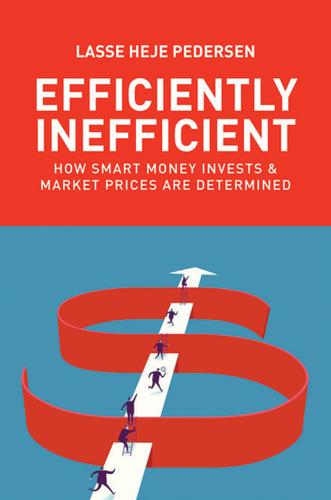
Efficiently Inefficient: How Smart Money Invests and Market Prices Are Determined
by
Lasse Heje Pedersen
Published 12 Apr 2015
Macro Strategies If Gordon Gekko was an equity trader in the movie Wall Street, the Duke brothers and Eddie Murphy were macro traders in the movie Trading Places, using futures markets to bet on the direction of orange juice prices. I divide macro strategies into global macro and managed futures. Global macro traders bet on economy-wide phenomena around the world. They take the view that the overall stock market will go up or down, that inflation will lead to a spike in gold prices, or that emerging-market currencies will rise or collapse. Some global macro traders take large positions, as is clear from the following quote from Stanley Druckenmiller, who learned it from Georges Soros (Schwager 2008): When you have tremendous conviction on a trade, you have to go for the jugular.
…
The differences between these sayings reflect the great variation across global macro traders. They come from a variety of backgrounds, ranging from traders with little formal training in economics to former central bank economists. They apply a range of different approaches, some analyzing data, others following every move of central banks, yet others traveling the world for global trading ideas. Some global macro funds are thematic traders, meaning that they focus on a few themes and express each theme in terms of various trades. For instance, one theme might be that China will continue to grow at an explosive rate, and the global macro trader might express this view by buying Chinese stocks or commodities imported by China or companies or industries selling to China.
…
If coupon payments are reinvested until maturity, then there is reinvestment risk. 8 For corporate bonds with embedded options or mortgage-backed securities with prepayment risk, the discussion applies if one uses the option-adjusted spread rather than the simple credit spread. 9 The average default rates and recovery rates are from Moody’s Investor Services, “Corporate Default and Recovery Rates, 1920–2010.” 10 The uncovered interest rate parity (UIP) conjectures that higher foreign interest rates should be associated with lower future changes in exchange rates, but the UIP does not hold empirically. Said differently, the currency carry trade has worked on average as high interest rates have not been associated with average future depreciation. CHAPTER 11 Global Macro Investing The whole world is simply nothing more than a flow chart for capital. —Paul Tudor Jones The term global macro is used for a type of hedge funds that pursue a variety of different investment strategies. Global macro investors look for opportunities all over the world and in all asset classes, often use long-term, “big-picture” themes to drive positions, and are sometimes willing to take large, unhedged bets.
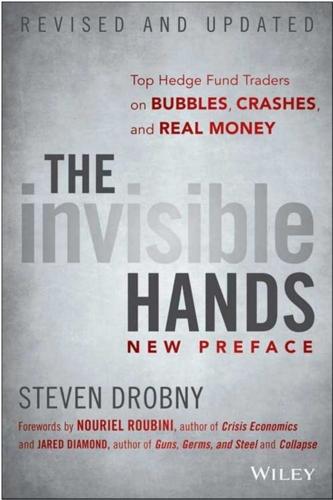
The Invisible Hands: Top Hedge Fund Traders on Bubbles, Crashes, and Real Money
by
Steven Drobny
Published 18 Mar 2010
The question is: Why wait for a crisis to take a global macro approach when arguably it is already too late? Why not incorporate certain global macro principles into a real money investment approach, melding the best from both worlds? Understanding how global macro managers avoided large losses and made money in 2008 offers a unique opportunity for new ideas and approaches to be adopted by real money managers and all investors. The real successes of 2008 occurred when managers took decisive action rather than sat still and hoped that everything would be okay in the long run. The way that global macro managers approach risk distinguishes them from other hedge fund strategies and real money managers.
…
Risk management was the key differentiator and global macro hedge fund managers were, in aggregate, one of the few investment categories that managed risk effectively through the crisis. Although there is always a wide disparity in performance among global macro managers due to its broad mandate, there was a clear delineation in 2008: funds that focused on risk made money or at least preserved capital, whereas most funds that remained entrenched in long-held views suffered debilitating losses. Because my professional network includes many of the world’s leading global macro hedge fund managers, I decided to reach out to those who performed in 2008 to see if any lessons were transferable to real money and other investors.
…
My last book, Inside the House of Money: Top Hedge Fund Traders on Profiting in the Global Markets (John Wiley & Sons), published in 2006, captured the process behind global macro investing through a series of interviews with some of the top global macro hedge fund traders at the time. Many of these managers foresaw the coming credit crunch, and elements of this foresight were captured through the animated discussions in the book. This book seeks to ignite a discussion about portfolio management in light of the lessons learned in 2008. Through another series of interviews, this time with top global hedge fund traders who managed risk well through 2008 and into 2009, the book highlights certain valuable elements of the global macro approach that could be applied to other mandates within money management.

The New Science of Asset Allocation: Risk Management in a Multi-Asset World
by
Thomas Schneeweis
,
Garry B. Crowder
and
Hossein Kazemi
Published 8 Mar 2010
The short exposure can also be a put option on a stock index, which is used as a hedging technique for bear market conditions. CASAM/CISDM Global Macro Index (CISDM Global Macro): The median performance of global macro managers reporting to the CASAM/CISDM Hedge Fund Database. Global macro strategies employ opportunistically long and short multiple financial and/or non-financial assets. Trading managers following global macro strategies might use systematic trend-following models or discretionary approaches. For systematic trend-following global macro managers who trade primarily in futures and option markets, returns are similar to those of commodity trading advisors.
…
Exhibit 8.11 emphasizes the relationships between noninvestable CISDM hedge fund indices and the investable Hedge Fund Research (HFRX) 186 EXHIBIT 8.10 THE NEW SCIENCE OF ASSET ALLOCATION Performance of Alternative Hedge Fund Indices (2001–2008) Barclays Hedge Fund Index CISDM Equal Weighted Hedge Fund Index CSFB/Tremont Hedge Fund Index HFRI Fund Weighted Composite Index Barclays Equity Market Neutral CISDM Equity Market Neutral CSFB/Tremont Equity Market Neutral HFRI Equity Market Neutral Barclays Fixed Income Arbitrage CISDM Fixed Income Arbitrage CSFB/Tremont Fixed Income Arbitrage Barclays Hedge Convertible Arbitrage CISDM Convertible Arbitrage CSFB/Tremont Convertible Arbitrage HFRI Convertible Arbitrage Barclays Event Driven CISDM Event Driven Multi-Strategy CSFB/Tremont Event Driven HFRI Event Driven Barclays Merger Arbitrage CISDM Merger Arbitrage CSFB/Tremont Risk Arbitrage HFRI Merger Arbitrage Barclays Distressed Securities CISDM Distressed Securities CSFB/Tremont Distressed HFRI Distressed Securities Barclays Equity Long Short CISDM Equity Long/Short CSFB/Tremont Long/Short Equity HFRI Equity Hedge Barclays Global Macro CISDM Global Macro CSFB/Tremont Global Macro HFRI Macro Barclays Emerging Markets CISDM Emerging Markets CSFB/Tremont Emerging Markets Annualized Return Standard Deviation 5.1% 5.6% 5.4% 5.0% 4.1% 5.6% 0.4% 3.3% 1.3% 3.6% 0.8% 1.7% 3.3% 1.2% 0.7% 6.6% 5.6% 7.6% 6.0% 5.7% 4.8% 4.1% 4.3% 6.6% 7.6% 8.5% 7.7% 4.8% 4.4% 4.5% 2.8% 7.7% 6.4% 11.6% 8.8% 9.7% 7.9% 8.7% 6.6% 6.6% 5.6% 6.4% 3.1% 2.0% 14.7% 2.9% 6.4% 4.8% 7.1% 7.5% 6.2% 7.9% 8.2% 6.3% 6.3% 5.6% 7.1% 3.8% 3.4% 3.9% 3.7% 7.3% 6.0% 6.1% 6.6% 5.4% 6.0% 7.2% 8.2% 5.2% 3.3% 5.5% 5.1% 12.6% 10.5% 10.3% Return and Risk Differences among Similar Asset Class Benchmarks 187 Correlation Information Ratio Maximum Drawdown 0.78 0.84 0.97 0.78 1.34 2.84 0.03 1.16 0.20 0.74 0.11 0.23 0.53 0.15 0.08 1.05 0.90 1.36 0.85 1.50 1.43 1.04 1.16 0.91 1.26 1.40 1.18 0.89 0.73 0.62 0.34 1.47 1.93 2.10 1.71 0.77 0.75 0.84 −23.1% −21.1% −19.7% −20.5% −6.1% −2.8% −42.7% −8.3% −28.6% −19.3% −29.0% −31.5% −22.5% −32.9% −35.3% −19.6% −20.2% −18.9% −23.9% −7.2% −5.7% −8.2% −8.1% −34.3% −21.2% −21.5% −26.9% −14.0% −17.0% −21.6% −28.5% −6.4% −2.6% −14.9% −4.9% −40.1% −35.3% −30.9% S&P 500 BarCap US Aggregate CISDM HF Strategy Index 0.78 0.79 0.62 0.80 −0.13 0.44 0.21 0.02 0.50 0.56 0.44 0.48 0.46 0.45 0.49 0.72 0.76 0.62 0.77 0.62 0.66 0.56 0.66 0.58 0.65 0.58 0.58 0.77 0.77 0.68 0.81 0.30 0.30 0.21 0.13 0.75 0.69 0.69 0.01 0.00 0.05 −0.03 −0.03 0.00 −0.22 −0.07 0.11 0.11 0.19 0.25 0.32 0.21 0.26 −0.08 0.00 −0.04 −0.04 0.06 0.05 0.14 0.06 −0.02 0.10 −0.07 −0.01 −0.11 −0.10 0.04 −0.07 0.12 0.11 0.30 0.12 0.05 0.09 0.10 0.99 1.00 0.91 0.99 0.57 1.00 0.07 0.59 0.85 1.00 0.89 0.97 1.00 0.93 0.97 0.94 1.00 0.92 0.96 0.86 1.00 0.67 0.90 0.87 1.00 0.83 0.91 0.98 1.00 0.91 0.96 0.81 1.00 0.45 0.76 0.98 1.00 0.95 188 CISDM Equal Weighted Hedge Fund Index HFRX Equal Weighted Strategies Index CISDM Equity Market Neutral HFRX Equity Market Neutral CISDM Convertible Arbitrage HFRX Convertible Arbitrage CISDM Distressed Securities HFRX Distressed Securities CISDM Event Driven Multi-Strategy HFRX Event Driven CISDM Merger Arbitrage HFRX Merger Arbitrage CISDM Equity Long/Short HFRX Equity Hedge 7.2% 6.6% 2.2% 3.4% 7.4% 18.2% 6.8% 8.2% 6.9% 7.3% 3.8% 3.8% 6.3% 8.6% −1.7% .3% 1.4% −0.9% −15.7% 4.2% −2.7% 3.3% −0.2% 5.4% 5.1% 4.1% −2.2% Standard Deviation 3.8% Annualized Return 0.48 (0.03) 1.43 1.35 0.65 (0.26) 0.62 (0.33) (0.86) (0.12) 0.42 2.45 (0.25) 0.53 Information Ratio 0.29 −6.0% 0.88 1.00 0.80 1.00 0.96 1.00 0.83 1.00 0.91 −60.4% −21.2% −31.8% −20.2% −25.8% −5.7% −3.4% −17.0% −28.5% 1.00 1.00 −2.8% −22.5% 0.93 1.00 CISDM Strategy Index −23.6% −21.1% Maximum Drawdown Comparison on Noninvestable and Investable Indices (2004−2008) Performance and Correlations 2004–2008 EXHIBIT 8.11 0.87 0.86 0.77 0.55 0.77 0.83 0.82 0.61 0.75 0.69 0.05 0.49 0.80 0.82 S&P 500 0.05 0.04 0.10 0.28 0.03 0.06 0.11 −0.11 0.19 0.37 −0.24 0.06 0.12 0.12 BarCap US Aggregate Correlation 0.76 0.71 0.63 0.47 0.60 0.70 0.81 0.54 0.80 0.80 −0.11 0.37 0.75 0.74 BarCap US Corporate High-Yield Return and Risk Differences among Similar Asset Class Benchmarks 189 indices over the period 2004 to 2008.1 The HFRX indices are based on a set of managers that provide daily transparency and follow a set of selection rules (e.g., size, years since inception) that are typically demanded by large institutional investors.
…
Currently several noninvestable as well as investable manager based CTA indices are available. 144 0.39 1.00 0.78 0.80 0.73 0.50 0.74 0.53 0.12 0.39 0.45 0.54 0.68 0.61 0.65 0.76 0.57 Fixed Income Arbitrage 1.00 Equity Market Neutral 0.24 0.53 0.69 0.56 0.71 0.79 1.00 0.78 0.45 Convertible Arbitrage 0.36 0.75 0.83 0.68 0.90 1.00 0.79 0.80 0.54 Distressed Securities CISDM Hedge Fund Strategy Correlations (2001–2008) CISDM Equity Market Neutral CISDM Fixed Income Arbitrage CISDM Convertible Arbitrage CISDM Distressed Securities CISDM Event Driven Multi-Strategy CISDM Merger Arbitrage CISDM Emerging Markets CISDM Equity Long/Short CISDM Global Macro EXHIBIT 7.7 0.47 0.89 0.86 0.82 1.00 0.90 0.71 0.73 0.68 Event Driven Multi-Strategy 0.45 0.79 0.65 1.00 0.82 0.68 0.56 0.50 0.61 Merger Arbitrage 0.47 0.83 1.00 0.65 0.86 0.83 0.69 0.74 0.65 Emerging Markets 0.60 1.00 0.83 0.79 0.89 0.75 0.53 0.53 0.76 Equity Long/Short 1.00 0.60 0.47 0.45 0.47 0.36 0.24 0.12 0.57 Global Macro 145 5.00% 4.00% 3.00% 2.00% 1.00% 0.00% – 1.00% – 2.00% – 3.00% – 4.00% – 5.00% – 6.00% EXHIBIT 7.8 Average Monthly Return CISDM Distressed Securities CISDM Emerging Markets CISDM Convertible Arbitrage CISDM Merger Arbitrage CISDM Hedge Fund Strategy Returns Ranked by S&P 500 (2001–2008) CISDM Global Macro CISDM Equity Market Neutral Middle 32 Months S&P 500 Worst 32 Months CISDM Equity Long/Short CISDM Event Driven Multi-Strategy CISDM Fixed Income Arbitrage Best 32 Months 146 THE NEW SCIENCE OF ASSET ALLOCATION Sources of Managed Futures Return The sources of return to managed futures are uniquely different from traditional stocks, bonds, or even hedge funds.
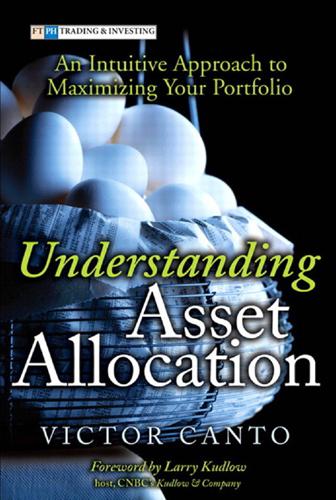
Understanding Asset Allocation: An Intuitive Approach to Maximizing Your Portfolio
by
Victor A. Canto
Published 2 Jan 2005
Finally, the hedge fund’s annual returns compare quite favorably to most equity indices, such as the S&P 500. 3.2 Midwest Hedge Fund 2.8 2.4 2.0 S&P 1.6 Global Macro 1.2 0.8 1998 Figure 8.5 1999 2000 2001 2002 2003 2004 Growth of $1 invested in the S&P 500, the Global Macro Index, and the Midwest hedge-fund strategy. Table 8.7 Midwest hedge-fund global macro strategy. Benchmark Beta Alpha T-Stat S&P 500 0.13 12.50% 3.71 Global Macro Index 0.13 12.20% 3.26 Table 8.8 Midwest hedge-fund global macro strategy: Sharpe ratio. S&P 500 0.17 Global Macro Hedge Fund Index 0.99 Midwest Hedge Fund 1.17 Chapter 8 The Cyclical Asset Allocation Strategy’s Versatility 161 Summary These case studies illustrate the CAA approach’s versatility.
…
Hence, each and every one of the strategies is viable; there is more than one way to skin a cat. 262 UNDERSTANDING ASSET ALLOCATION Table 14.3 The feasibility of alpha and beta strategies. 1997 1998 1999 2000 2001 2002 2003 2004 Average Return Standard Deviation Sharpe Ratio Chapter 14 Every Strategy Has Its Day Average Return 15.78% 4.25% 15.88% 11.13% 8.21% 6.25% 12.01% 6.94% 9.98% 4.36% 1.37 Funds of Funds 17.39% 4.20% 28.50% 7.84% 3.52% 1.26% 11.45% 7.08% 9.85% 8.98% 0.65 Hurdle Rate* 9.67% 10.44% 7.72% 5.76% 5.20% 7.88% Domestic 32.36% 23.70% 18.92% –1.69% –7.78% –19.84% 31.08% 13.18% 9.71% Equity Index** 19.10% 0.30 Global Macro 7.08% 0.97 9.55% 9.30% 23.91% 8.42% 15.73% 8.15% 5.49% 4.96% 5.54% 17.25% 4.60% 10.87% * The hurdle rate is defined as the average of one month LIBOR plus 400 basis points. ** The Domestic Equity Index consists of a weighted average of the large-, mid-, and small-cap stocks. The indices’ weights are 70 percent, 20 percent, and 10 percent, respectively. 263 Table 14.3, however, also reveals it is the global macro strategy that delivers the highest rate of return over the period. This is consistent with my view that the global macro strategy is the hedge-fund version of our CAA strategy.
…
Another six strategies—macro (see Figure 12.2a), distressed securities (see Figure 12.2b), event driven (see Figure 12.2c), emerging markets (see Figure 12.2d), market timing (see Figure 12.2e), and hedgefund composite (see Figure 12.2f)—outperformed the S&P 500 during the 1990–1994 and 1999–2004 time periods. 2.6 2.4 2.2 2.0 1.8 1.6 1.4 1.2 1.0 1990 1992 Figure 12.2a 1994 1996 1998 2000 2002 2004 Ratio of the global macro hedge-fund index to the S&P 500. Chapter 12 Keeping the Wheels on the Hedge-Fund ATV 233 2.0 1.8 1.6 1.4 1.2 1.0 0.8 1990 1992 1994 1996 1998 2000 2002 2004 Figure 12.2b Ratio of the distressed securities hedge-fund index to the S&P 500. 2.0 1.8 1.6 1.4 1.2 1.0 0.8 1990 1992 Figure 12.2c 1994 1996 1998 2000 2002 2004 Ratio of the event-driven hedge-fund index to the S&P 500. 2.4 2.0 1.6 1.2 0.8 0.4 1990 1992 1994 1996 1998 2000 2002 2004 Figure 12.2d 234 Ratio of the emerging-markets hedge-fund index to the S&P 500.

Market Sense and Nonsense
by
Jack D. Schwager
Published 5 Oct 2012
Another factor is that many CTAs manage money only through managed accounts (see Chapter 16) and do not offer a fund structure. However, the line between hedge fund managers and CTAs has become increasingly blurred over the years. There is no difference between global macro managers who execute trades only in the futures and FX markets and CTAs. Although it is true that most CTAs pursue systematic, trend-following approaches and most global macro funds (including those that trade only futures and FX) are primarily discretionary, there are discretionary CTAs and systematic global macro funds. In this light, the distinction between the groups as separate asset classes appears artificial. If anything, it makes more sense to differentiate along strategy approaches, such as systematic macro versus discretionary macro (with each group containing both CTAs and global macro hedge funds), rather than between global macro managers and CTAs.
…
Historically, emerging markets have been more volatile than developed markets, a characteristic that has generally carried over to hedge funds involved in these markets. Global macro. Managers in this strategy category seek to profit from correctly forecasting future trends in major global markets, including equities, bonds, and foreign exchange (FX). Trades are by definition directional, but are not inherently biased to the long or short side. A global macro fund is not inherently more likely to be long equity exposure than short equity exposure; the net equity position will reflect the manager’s expectations for the equity market at that point in time.
…
Trades may reflect single market trend expectations (e.g., long U.S. bonds) or relative strength market expectations (e.g., long U.S. bonds/short German bonds). Some global macro managers will confine their trades to macro-level instruments (e.g., futures, exchange-traded funds [ETFs]), while others may include specific securities in a market group (e.g., selecting stocks with the best perceived potential to express a bullish equity bias). The success of a global macro fund is dependent on the manager’s ability to correctly analyze the probable price direction of major global market trends and to successfully time implied trades.
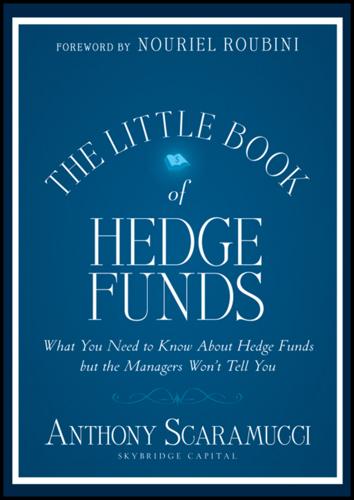
The Little Book of Hedge Funds
by
Anthony Scaramucci
Published 30 Apr 2012
Unlike the strategies just discussed, these strategies do not provide a hedge against market risk; rather they seek to preserve capital and earn absolute returns by taking advantage of global market trends and the direction of movements in the financial market. Strategies within this classification include: Global Macro Funds Managed Futures Global Macro Funds When I think of the global macro hedge fund managers, I always seem to imagine the same scenario: a group of contrarians, pacing back and forth in a war room as they try to assess every price movement that is going on in real time around the planet. Interest rate movements, commodity prices, currencies, stocks, and bonds—basically everything on the Earth that trades! Global macro funds are akin to investing without limits; they can invest in any market, trade any asset class, and use any financial instrument.
…
During this time, many successful investors were lured into the hedge fund world and began operating under the scheme of raising capital and using unregistered funds to yield high returns. This, coupled with the growing interest in foreign investment, resulted in the rise of global macro funds, which accounted for 60 percent of the hedge fund industry in the 1990s, according to Oliver Schupp of the Credit Suisse/Tremont Hedge Fund Index. Perhaps the most famous trade in global macro history occurred in 1992 when George Soros’ and Stanley Druckenmiller’s Quantum Fund famously “broke the Bank of England.” In realizing that the Bank of England did not have sufficient reserves to defend the British pound against devaluation, they began selling massive quantities of sterling quicker than a liquidating jewelry shop.
…
However, with the collapse of the “go-go-market,” and the advent of stagflations and its bear market in the 1970s, many of these funds floundered—apparently, some overzealous managers neglected to hedge in their quest for big gains. “By one estimate, assets under management by the 28 largest hedge funds had declined by 70 percent by the end of 1970. Alas, the hedge fund phenomenon was viewed as fleeting.” And then came the 1980s and 1990s . . . and the emergence of celebrated hedge fund managers who favored global macro (think = big picture) hedge fund strategies. John H. Makin, a principal at Bruce Kovner’s Caxton Associates, referred to this period by saying, “The extraordinarily high returns earned by hedge funds during their golden age in the 1980s and early 1990s were not too good to be true. They were just too good to be true for everyone.”
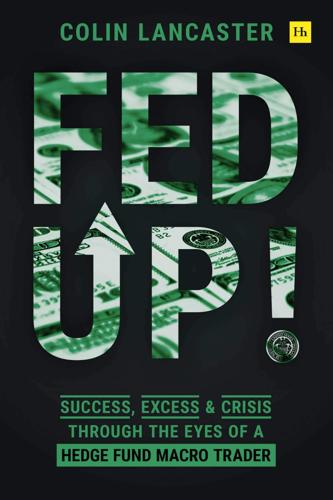
Fed Up!: Success, Excess and Crisis Through the Eyes of a Hedge Fund Macro Trader
by
Colin Lancaster
Published 3 May 2021
Jerome (Jay) Powell, the head of the Fed, is making a mid-cycle adjustment that will drive stocks higher. And there’s no way he can stop now. He has to cut rates again at the end of the month. Markets are going up. As global macro traders we are paid to get these calls right. We are paid to understand what is going on in the world and to turn these views into cash. Think George Soros and Stan Druckenmiller, some of the best ever. * What is global macro, anyway? When people say “macro,” a lot of people have visions of George Soros when he was “breaking the Bank of England” or Paul Tudor Jones when he predicted the ‘87 crash.
…
Success, Excess and Crisis Through the Eyes of a Hedge Fund Macro Trader Colin Lancaster Contents Part 1: The Late Stages of a Bubble Chapter 1 Sushi, Sake and a Breakdown in the repo markets October 2019 Chapter 2 Viva Las Vegas November 2019 Chapter 3 The Star Tavern and Life in Knightsbridge December 2019 Part 2: The Crash Chapter 4 The Virus Spreads January 2020 Chapter 5 Risk Management and an Inflection Point February 2020 Chapter 6 Market Crash March 2020 Part 3: The Aftermath Chapter 7 QE Dreaming April 2020 Chapter 8 Economic Data Worse than the Great Depression May 2020 Chapter 9 Lessons from the Gilded Age; Back to Market Highs June 2020 About the author Acknowledgments Publishing Details For Tia, Victoria, Sophia, and Maria “We have always found, where a government has mortgaged all its revenues, that it necessarily sinks into a state of languor, inactivity, and impotence.” David Hume This book tells the story of a global macro trader working amidst the greatest market panic that we’ve seen since the Great Depression. As the COVID-19 pandemic spreads across the world, readers are taken through the late-stage decadence of an exuberant market bubble to the depths of the market crash and into the early innings of a recovery.
…
Readers will be drawn into a trader’s frenetic pace of life and witness his struggle to balance his personal values with the values of the world around him. It shines a light on the largest policy issues confronting the USA, while offering an entertaining and humorous look at the guys and gals who are the new market operators. This riveting account of the 2020 market crash from inside the mind of a global macro trader will serve as an exciting, nail-biting record of current times. It’s about making fortunes while the world slips into misfortune. Will he beat the markets, or will the markets beat him? Part 1: The Late Stages of a Bubble Chapter 1 Sushi, Sake and a Breakdown in the repo markets October 2019 10/1/2019—Fed continues to pump liquidity via repo market; will continue at least until Oct. 10; balance sheet expanding, “not QE” QE. 10/4/19—Payrolls +136K for Sept.

Commodity Trading Advisors: Risk, Performance Analysis, and Selection
by
Greg N. Gregoriou
,
Vassilios Karavas
,
François-Serge Lhabitant
and
Fabrice Douglas Rouah
Published 23 Sep 2004
We can calculate the cumulative performance improvement to the stock/bond/hedge fund of funds portfolio from downside risk protection and upside return enhancement by: (−1.90% × 42 months) − (−2.07 × 42 months) + [(0.92% − 0.91%) × 132 months] = 8.46% 225 60/40 US Stocks/ US Bonds 55/35/10 Stocks/ Bonds/FOF 55/35/10 Stocks/ Bonds/Equity L/S 55/35/10 Stocks/Bonds/ Convertible Arb 55/35/10 Stocks/Bonds/ Market Neutral 55/35/10 Stocks/Bonds/ Distressed Debt 55/35/10 Stocks/Bonds/ Event Driven 55/35/10 Stocks/Bonds/ Fixed Income Arb 55/35/10 Stocks/Bonds/ Global Macro 55/35/10 Stocks/Bonds/ Market Timing 55/35/10 Stocks/Bonds/ Merger Arbitrage 55/35/10 Stocks/Bonds/ Short Selling 2.54% 2.42% 2.40% 2.45% 2.49% 2.36% 2.51% 2.50% 2.43% 1.00% 0.93% 0.92% 0.95% 0.95% 0.90% 0.97% 0.95% 0.93% 2.02% 2.45% 0.92% 0.85% 2.60% 0.91% Standard Deviation 0.198 0.196 0.198 0.207 0.189 0.201 0.204 0.195 0.197 0.215 0.191 0.177 Sharpe Ratio 40 41 42 43 42 41 40 40 41 −2.03% −1.88% −1.83% −1.84% −1.91% −1.86% −2.04% −2.03% −1.90% 37 42 −1.90% −1.63% 42 Number of Downside Months −2.07% Average Downside Downside Risk Protection Using Hedge Funds Expected Portfolio Composition Return TABLE 11.2 26.63% 9.04% 5.74% 5.34% 10.68% 6.72% 8.25% 10.08% 9.86% 5.74% 7.14% N/A Cumulative Downside Protection −7.92% 3.57% 7.18% 9.86% −1.32% 5.28% 4.37% 1.32% 3.57% 13.88% 1.32% N/A Cumulative Upside Potential 18.71% 12.61% 12.92% 15.20% 9.36% 12.00% 12.62% 11.40% 13.43% 19.62% 8.46% N/A Cumulative Performance Improvement 226 RISK AND MANAGED FUTURES INVESTING The cumulative performance improvement of 8.46 percent may be split into two parts, the cumulative return earned from downside risk protection (7.14 percent) and the amount earned from upside return potential (1.32 percent). Table 11.2 presents several interesting results. In every case, the downside risk was reduced. The cumulative downside protection for each hedge fund strategy is positive. Average monthly downside risk ranged from −1.63 percent for short sellers to −2.04 percent for global macro hedge funds. It is not surprising that global macro hedge funds offered the least in downside protection because these funds tend to take significant market risk the same as stocks and bonds. (See Anson 2000.) Also, it is not surprising that short sellers offered the best downside risk protection because the very nature of this strategy is to profit in months when the stock and bond markets perform poorly.
…
In a risk/return framework, CTAs do not have an exceptional profile compared to other hedge fund investment strategies (e.g., global macro) or even some traditional equity groups (e.g., real estate investment trust [REIT] equities). Actually, only two hedge funds families have lower returns than CTAs: the dedicated short bias and the emerging markets. Such a finding is not that surprising, and the origin of their poor results is related to their invest- 310 PROGRAM EVALUATION, SELECTION, AND RETURNS 0.150 CSFB Global Macro 0.125 CSFB Equity Mkt. Ntrl. CSFB Event Driven 0.100 CSFB Long/Short CSFB Tremont Hedge Fund Annualized Return CSFB Convertible Arbitrage NAREIT North Americas eq. 0.075 CSFB Fixed Inc.
…
We identify and measure this long volatility exposure, which may not always be transparent from the trading positions of a commodity trading advisor. We also examine ways to apply these long volatility strategies to improve risk management. C INTRODUCTION The managed futures industry has come full circle in its application over the last 15 years. In the early 1990s, global macro funds were the predominant form of the hedge fund industry. These funds were primarily managed futures funds run by commodity trading advisors (CTAs). As the 1990s progressed, other types of hedge fund strategies came to the forefront, such as relative value arbitrage, event driven, merger arbitrage, and equity long/short.
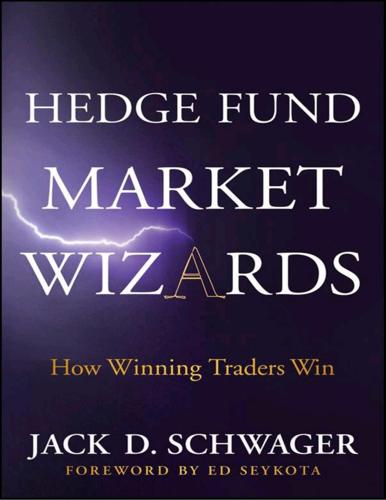
Hedge Fund Market Wizards
by
Jack D. Schwager
Published 24 Apr 2012
Return is a function of both skill (in selecting, implementing, and liquidating trades) and the degree of risk taken. Doubling the risk will double the return. In this light, the true measure of performance is return/risk, not return. This performance evaluation perspective is especially true for global macro, a strategy in which only a fraction of assets under management are typically required to establish and maintain portfolio positions.1 Thus, if desired, a global macro manager could increase exposure by many multiples with existing assets under management (i.e., without any borrowing). The choice of exposure will drive the level of both returns and risk. O’Shea has chosen to run his fund at a relatively low risk level.
…
O’Shea has chosen to run his fund at a relatively low risk level. Whether measured by volatility (8.2 percent), worst monthly loss (3.7 percent), or maximum drawdown (10.2 percent), his risk metrics are about half that of the average for global macro managers. If run at an exposure level more in line with the majority of global macro managers, or equivalently, at a volatility level equal to the S&P 500, the average annual compounded net return on O’Shea’s fund would have been about 23 percent. Alternatively, if O’Shea had still been managing the portfolio as a proprietary account, an account type in which exposure is run at a much higher level relative to assets, the returns would have been many times higher for the exact same trading results.
…
On what basis were you making your market trading decisions? It sounds so unbelievably naive now, but basically I did it on how overbought or oversold I thought the market was and what I thought the market direction should be based on my broad feelings on global macro. But, of course, although I didn’t realize it then, what I knew about global macro at the time was pathetic. How did you judge whether the market was overbought or oversold? Again, it sounds pathetic, but I based it simply on whether the market was up a lot or down a lot. I can’t really believe I’m saying this now. My thinking was something like, The market has been down six days in a row.
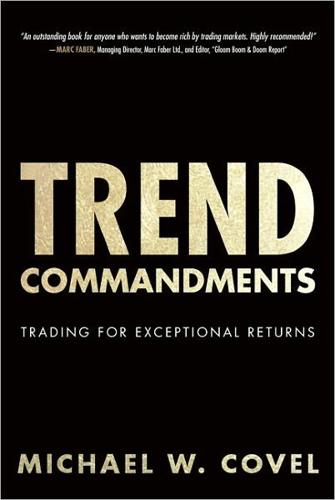
Trend Commandments: Trading for Exceptional Returns
by
Michael W. Covel
Published 14 Jun 2011
Whenever there is market movement, it is necessary for a Wall Street analyst to feel that he or she knows why it occurred. Almost always what they say is worthless. 12 Tre n d C o m m a n d m e n t s Global Macro or Systematic Global Macro: Global macro is another term used to describe trend following traders, but indirectly. They do not say managed futures, and they do not say hedge fund, so it is global macro. It might make wealthy investors in Liechtenstein and Saudi Arabia feel more secure. The strategy is still trend following. Hedge Fund: Think unregulated mutual fund that can trade in all markets up and down.
…
See http://www.automated-tradingsystem.com/why-trend-following-works-look-at-the-distribution/. 4. Paul Mulvaney. Covel interview 2011. 5. See http://www.baseball-reference.com/players/p/pujolal01.shtml. 6. “Elementary Concepts in Statistics.” StatSoft Electronic Statistics Textbook. See http://www.statsoft.com/textbook/elementary-concepts-in-statistics/. 7. “Systematic Global Macro: Performance, Risk, and Correlation Characteristics.” Graham Capital Management, L. P., January, 2009. See http://www.grahamcapital.com. 256 Tre n d C o m m a n d m e n t s Aha! 1. Lao Tsu, Verse XXXIII, Tao Te Ching. 2. See http://www.forbes.com/profile/paul-tudor-jones. 3. Trader: The Documentary, PBS Film, 1987. 4.
…
N., 225 emotional behavior of humans, 25-26 entering markets, 73 EQ (emotional intelligence), IQ versus, 123-125 exit strategies, 75-76 F 269 financial journalism, 161-163 Forecasting the Monthly Movement of Stock Prices (Dunnigan), 229 Foster, Jodie, 4 Fowler, William Worthington, 224, 241 “Free Bird,” 211 Fried, Jason, 6 Friedman, Milton, 113 fundamental analysis, as story, 33-35 G game playing, 205 Gann, William D., 226 Gartley, Harold M., 226 global macro, defined, 12 global statistical financial analysis. See trend following Godin, Seth, 7, 235 gold, trading, 173 Goldline.com, 173 Fama, Eugene F., 25, 101-102 Google, 47, 73 “Fashions in Forecasting” (Jones), 228 Gorbachev, Mikhail, 208 270 Index Gore, Al, 182 Hoover, Herbert, 175 government manipulation of monetary policy, 181-183 Hostetter, Amos, 74, 239 Grantham, Jeremy, 26 How to Trade in Stocks (Livermore), 227-228 greed, capitalism and, 113-115 Hussman, John, 42 Greenspan, Alan, 176, 181 I Guynn, Jack, 176 H H & H Imports Inc., 166 Hamilton, William, 225 happiness, improving, 124 Harbaugh, Jim, 126 Harding, David, 5, 15, 42, 215-218 hatred of trend following, 109-110 Hearne, Pat, 224 hedge funds, defined, 12 Helbing, Dirk, 98 Henry, John W., 4-5, 15, 91 hero worship, 147-148 high frequency trading, defined, 11 The Hindenburg Omen (technical analysis pattern), 119 historical trends, defined, 39 immediacy of decisions, 131-132 index investing, defined, 12 intelligence, IQ versus EQ, 123-125 Investment Biker (Rogers), 23 investors, traders versus, 29-30 IQ (intelligence quotient), EQ (emotional intelligence) versus, 123-125 irrational behavior of humans, 25-26 J–K Japanese Nikkei 225 stock index, 151 Jaworski, Ron, 140 Jones, Alfred Winslow, 228 Jones, Herbert E., 228 Jones, Paul Tudor, 15, 143-144 judgment, 30 Kahneman, Daniel, 118 history of trend following, 221-231 Kernen, Joe, 215-218 Hite, Larry, 15 King of the Hill (television program), 147 “home runs,” 81-82 Index Kovner, Bruce, 5, 15 Krakower, Susan, 162 LTCM (Long Term Capital Management), 101-102, 216 Krispy Kreme, 34 luck versus skill in trend following, 189-190 L Lynyrd Skynyrd, 211 “law of small numbers,” 118 M learning from others, 143-144 Lebeau, Charles, 60 Leeson, Nick, 4, 91 Lefèvre, Edwin, 223 Livermore, Jesse, 79, 223, 227-228, 239 long, defined, 12 long only, defined, 12 Long Term Capital Management (LTCM), 101-102, 216 Madoff, Bernard, 81 Magee, John, 226 Man Group, 15 Man Investments, 5 managed futures, defined, 11.
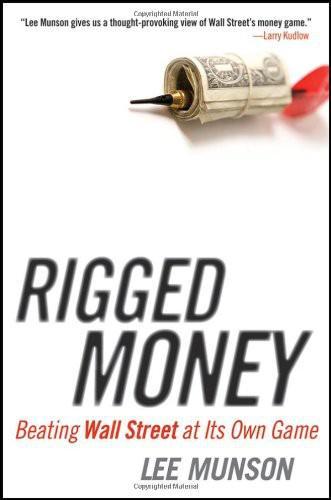
Rigged Money: Beating Wall Street at Its Own Game
by
Lee Munson
Published 6 Dec 2011
While most of it can change direction faster than a Fed meeting, if one country’s currency is favored above another country’s currency, that country’s bond and stock market will be close behind it. global macro Generally defined as a management style using world economic data to formulate investment decisions. In practice this is what traders say when they want to be the big man on campus. In practice, a global macro trader uses the largest indexes of stocks, bonds, and commodities, taking long and short positions. Examples include the S&P 500, 10-year U.S. Treasury bonds, oil, and currency. It is considered more respectable to be a global macro trader than a degenerate small-cap stock jock. I, of course, trade global macro and will never go back. Most of these reports are for professional investors looking for trading ideas.
…
See Federal Deposit Insurance Corporation Federal Deposit Insurance Corporation (FDIC) Federal Reserve Act fees, fixed fiduciary adviser Financial Industry Regulatory Authority (FINRA) financial sites, free financial system, globalized fixed-income securities Flash Crash fundamentals futures G Gauss, Carl Friedrich Gaussian distribution get-rich-quick scheme Glass-Steagall Act of 1933 global macro global macro trading gold bear gold bug Gold Confiscation Act Gold Reserve Act of 1934 gold standard Gold Standard Act (1900) gold historical use of as investment as money standardization of Graham, Benjamin grain Gramm-Leach-Bliley Act growth Grubman, Jack guru, seeking H hedge fund Heinze, Otto HELOC.
…
Also, there are smaller boutique firms that have a specialty such as bank stocks or government bonds. Ultimately anyone can print this stuff, but the main differentiating factor is the ability to monetize the information with commissions. Understanding the big picture is the first layer that will tell you where and how a firm sees the world. These are the global macro reports that go over how the world is supposed to turn, with a special emphasis on political trends, long-term economic trends, and the wildcards that could come out and bite you. For me, this is the most interesting stuff because there is an attempt to pull all markets together and make sense of them all.

Getting a Job in Hedge Funds: An Inside Look at How Funds Hire
by
Adam Zoia
and
Aaron Finkel
Published 8 Feb 2008
These can include government agency and governmentsponsored enterprise securities, private-label fixed-rate or adjustable-rate mortgage pass-through securities, fixed-rate or adjustable-rate collateralized mortgage obligations (CMOs), real estate mortgage investment conduits (REMICs), and stripped mortgagebacked securities (SMBS). Funds may look to capitalize on security-specific mispricings. Hedging of prepayment risk and interest rate risk is common. Leverage may be used, as well as futures, short sales, and options. Global Macro Global macro managers carry long and short positions in any of the world’s major capital or derivatives markets. These positions reflect their views on overall market direction as influenced by major economic trends and/or events. The portfolios of these funds can include stocks, bonds, currencies, and commodities in the form of cash or derivatives instruments.
…
c01.indd 5 1/10/08 11:00:55 AM 6 Getting a Job in Hedge Funds Table 1.3 Instruments and Styles COMMONLY USED INSTRUMENTS HEDGE FUND STYLES Public Equities Long/Short Quantitative Fixed Income Long Bias Event-Driven/Special Situations Currencies Short Only Value Commodities Arbitrage Trading Oriented Derivatives/Futures Market Neutral Global Macro Private Equity Industry Focus Multi-strategy Convertible Bonds Distressed Geographic Focus Arbitrage Strategies There are various types of arbitrage strategies, and all seek to exploit imbalances between different financial markets such as currencies, commodities, and debt. Some of the more popular hedge fund arbitrage strategies are convertible fixed income, risk, and statistical arbitrage.
…
Most funds invest globally in both developed and emerging markets. Note: These funds seek to profit from changes in global economies, which are typically triggered by changes in government policy. These changes can affect interest rates and in turn may impact currency, stock, and bond markets. Global macro funds depend on their own fundamental macroeconomic research and often employ a top-down global approach. Managed Futures This strategy invests in listed financial and commodity futures markets and currency markets around the world. The managers are usually referred to as Commodity Trading Advisors (CTAs).

Risk Management in Trading
by
Davis Edwards
Published 10 Jul 2014
Some are based on a single strategy, while others may be focused on a market sector (like healthcare or energy) or geography (like a Brazil‐focused 7 Trading and Hedge Funds Trading Desk FIGURE 1.1 Strategy I Strategy H Strategy G Trader 3 Strategy F Strategy E Strategy D Trader 2 Strategy C Strategy B Strategy A Trader 1 Trading Desk Strategies fund). Some of the more common types of hedge fund styles are Global Macro, Relative Value, and Event‐driven styles. Global Macro Global Macro strategies make big‐picture bets based on the economy as a whole. For these strategies, investment decisions are commonly based on interest rates, Gross Domestic Product, unemployment rates, or similar economic data. When executed, trades are commonly made in stock indices, government bonds, and currency markets. Global Macro trades are often directional—they speculate on the rise or fall of the overall market. For example, a hedge fund might buy broad based market indices when the market is expected to rise.
…
This eliminates many of the requirements placed on investment firms designed to protect individual investors and gives the hedge funds operating flexibility. 7. What kinds of investments are made by a global macro hedge fund? A. Directional bets on major economic events. B. Spread positions in closely related assets. Answer Key 271 C. Positions in stocks of companies undergoing corporate actions like mergers or restructuring. D. Investments in other hedge funds. Correct Answer: A Explanation: Answer A describes a trade that might be made by a global macro hedge fund. Answer B describes a relative value hedge fund, answer C describes an event‐driven hedge fund, and answer D describes a fund of funds. 8.
…
For example, a hedge fund might buy broad based market indices when the market is expected to rise. It would sell or short these same indices when the market is expected to fall. By taking advantage of markets that allow short selling, these strategies can make profits in both rising and falling markets. Many global macro strategies are based on an analysis of economic trends. In particular, traders study when trends are likely to persist and when they are likely to reverse. Through modeling, or intuition, the traders will rebalance their trading portfolios in an attempt to properly time the market. Relative Value Relative Value strategies make bets based on spreads between assets.
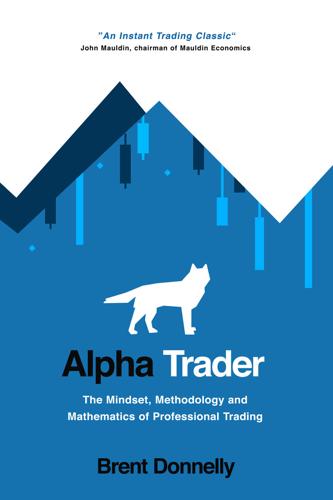
Alpha Trader
by
Brent Donnelly
Published 11 May 2021
Throw in the massive price distortions from non-price sensitive central bank buying of various assets and it’s not hard to see how whatever signal price action might have carried in the past has been destroyed by central banks, and arbitraged away by speculators who all learned from the same books and interviews. Global Macro 1970s to ??? Global macro is very crowded as the proliferation of pod-based hedge funds and internet macro strategists pushed global macro into the mainstream around 2005 and left too much capital chasing too little alpha. If you assume that any market strategy or inefficiency has X amount of alpha available, then the more actors trying to gobble up that alpha, the lower average returns and average Sharpes must fall over time. Too much competition and low interest rates are the top two challenges to global macro hedge fund returns since 2008. Massive moves in asset prices driven by Fed QE, Abenomics and ECB QE delivered monster alpha to hedge funds at various points in the 2010s, but these epic events have been rare in recent years.
…
He just wants to survive the last few years of his career and pay for his kid’s last few years of college. He is extremely risk averse. He views the business model as an agency where clients do trades, the bank goes to market and offloads the risk, and the bank earns a small, nearly risk-free commission. Or… B) Your manager is fired up and entrepreneurial and previously ran global macro at a big hedge fund. He wants that kind of ambitious risk culture at your bank because he believes a strong, healthy risk culture best serves the clients of the bank. By employing meaningful risk appetite, the bank can provide best-in-class pricing to clients, world class trade ideas and expert market intelligence.
…
Massive moves in asset prices driven by Fed QE, Abenomics and ECB QE delivered monster alpha to hedge funds at various points in the 2010s, but these epic events have been rare in recent years. Correlation and intermarket analysis 2004 to 2014 This was my bread and butter back in the Lehman Brothers days but after the 2008 Global Financial Crisis, everyone became acutely aware of the importance of correlation and intermarket analysis for short-term trading. Just about every global macro trader (and blogger) in the world is highly proficient in this style of analysis now. And there are many, many computerized systems using dynamic correlation to trade every asset class. Again: Too much money chasing too little alpha. I still use correlation as an important input for my trade ideas but I think its usefulness has declined significantly over the past 20 years.

The Alpha Masters: Unlocking the Genius of the World's Top Hedge Funds
by
Maneet Ahuja
,
Myron Scholes
and
Mohamed El-Erian
Published 29 May 2012
Contents Foreword: The Less Mysterious World of Hedge Funds Preface Disclaimer Chapter 1: The Global Macro Maven The Makings of a Maven Coming of Age through a Crisis Building Bridgewater Winning Over the World Bank Belly Up: Learning from the Bad Calculating Crises Foreseeing the Financial Crisis Extracting Alpha Bringing Home the Alpha Fund in Focus Procuring the Principles Watchful Eye on the World Today Going After What You Want Chapter 2: Man versus Machine Tim Wong: The Engineer Pierre Lagrange: The Money Maker Chapter 3: The Risk Arbitrageur The Making of a Risk Arbitrageur It’s Not All Numbers The Stuff of Legends Knowing What You Don’t Know “I’m Sort of an Independent Person” The Greatest Trade Ever Mispriced Risk: Dow/Rohm & Haas Jumping into the Deep End: Citigroup Good as Gold A Little Help from His Friends Fighting Back Chapter 4: Distressed Debt’s Value Seekers The Auto Bailout Brother-and-Sister Partnership Catching the Eye of Robert Bass Killer Combination Detecting Diamonds in the Rough Extracting the Value Chapter 5: The Fearless First Mover Gearing Up at Goldman Pulling in the Profits “A” for Appaloosa The Early Days No “A’s” in High School Learning and Earning Fierce and Fearless Titanic Track Record International Intrigue Russian Roulette Bullish on Bankruptcies Delphi Dilemma WaMu Winner The Force Behind Financials The ABC’s: AIG, BAC, and C Sizing Up the Sweet Spot Chapter 6: The Activist Answer Bright Beginnings Getting Gotham Going The School of Rock Making a Name for Himself Return on Invested Brain Damage Buying the Farm Rising from the Ashes Fast Food, Building Record Results Making Cents at McDonald’s Borders and Target: A Couple of Clunkers Zeroing in on Target MBIA A Dud The Greatest Trade A Penney for His Thoughts Canadian Pacific on the Rails What Makes an Activist Chapter 7: The Poison Pen The Young Whippersnapper Finds His Way Catching the Big Wave in the Storm Evolution and Revolution The Third Point Tao and Team Approach Chapter 8: The Cynical Sleuth Cause for Cynicism The Contrarian Investor The Secret Sauce of Short-Selling Defending an Investment Strategy China’s Coming Crisis Back to Business School Basics Chapter 9: The Derivatives Pioneer The Rise of a Trailblazer “Lehman Weekend” at the Fed The Technicalities of the Trade Afterword Appendix References Acknowledgments About the Author Index Copyright © 2012 by Maneet Ahuja.
…
Each manager of the Funds described in this book expressly disclaims liability for errors or omissions in the information and data presented herein and for any loss or damage arising out of the use or misuse or reliance on the information provided including without limitation, any loss or profit or any other damage, direct or consequential. No warranty of any kind, implied, expressed or statutory, is given in conjunction with any of the information and data contained in this book. Chapter 1 The Global Macro Maven Ray Dalio Bridgewater Associates Above all else, I want you to think for yourself—to decide 1) what you want, 2) what is true and 3) what to do about it. I want you to do that in a clear-headed thoughtful way, so that you get what you want. —From the introduction to Ray Dalio’s Principles In his famous Principles, Raymond, or “Ray,” Dalio tells his employees, “You learn so much more from the bad experiences in your life than the good ones.
…
Make sure to take the time to reflect on them. If you don’t, a precious opportunity will have gone to waste. Remember that pain plus reflection equals progress.” This is just one of the many aphorisms, precepts, nuggets of wisdom, and practical management tips that the 62-year-old Dalio—the founder of Bridgewater Associates, the global macro fund that is the world’s largest hedge fund, with $120 billion under management—emphasizes time and time again. Bridgewater advises and runs portfolios for the most powerful pension funds, central banks, and countries around the world. In fact, a recent study by London-based research firm Preqin shows that Bridgewater is the most popular hedge fund among public pensions.
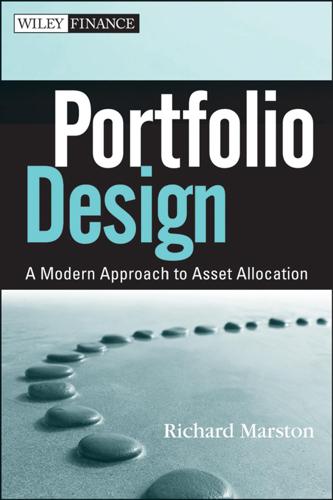
Portfolio Design: A Modern Approach to Asset Allocation
by
R. Marston
Published 29 Mar 2011
Similarly, it P1: a/b c09 P2: c/d QC: e/f JWBT412-Marston T1: g December 20, 2010 17:1 Printer: Courier Westford 171 Hedge Funds Other 10% Equity Market Neutral 6% Fixed-Income Arbitrage 4% Convertible Arbitrage 5% Fund of Funds 24% Long/Short Equity 31% Managed Futures 7% Event Driven 9% Global Macro 4% FIGURE 9.2 Hedge Funds by Strategy in TASS Database, 2004 Source: Getmansky, Lo, and Mei (2004b). did not matter whether the general level of European interest rates rose or fell. All that mattered is that Italian bonds outperformed German bonds in the run-up to the end-1997 deadline. It is evident from Figure 9.1 that this convergence strategy paid off handsomely.
…
Equity hedge: this category is used by the HFRI database and encompasses both equity market-neutral and equity long-short strategies. Relative value: also used by the HFRI database. This strategy attempts to take advantage of relative pricing discrepancies between instruments including equities, debt, options, and futures. Global macro: big directional bets on currencies or interest rates or some other macro variable. Event driven: bets on corporate events such as mergers and acquisitions, corporate restructurings, or share buybacks. Managed futures: long or short bets on futures contracts for commodities or currencies. Emerging markets: invests in the securities of companies or the sovereign debt of emerging countries Fund of funds: a fund that invests in a number of hedge funds to diversify the manager risk.
…
They find that the returns are characterized by high kurtosis, so the tails of the returns distribution are fatter than what you would find in a normal distribution. And these returns have a negative skewness, so returns are asymmetrical in the downward direction (not exactly what an investor desires). They can reject normality for all strategies except managed futures and global macro. Getmansky, Lo, and Makorov (2004a) show that hedge fund returns (for most strategies) have high serial correlation suggesting that hedge fund investments are relatively illiquid and/or the managers deliberately smooth their returns. The authors show that the serial correlation is higher for strategies where you would expect investments to be illiquid such as event-driven or emerging market investments.
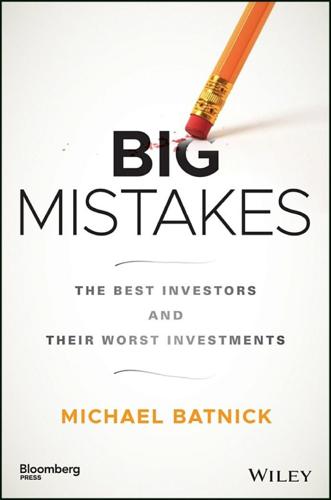
Big Mistakes: The Best Investors and Their Worst Investments
by
Michael Batnick
Published 21 May 2018
In the introduction, he was compared to Warren Buffett, underscoring the speaker's tremendous success: Probably the poster child of investors, Warren Buffett in the last thirty years has compounded at just under 20%; $1,000 30 years ago would be $177,000 today, 24 up years and 6 down years…3 of the 6 were [down] more than 20%. Our speaker tonight, $1,000 invested with him 30 years ago, today it would be $2.6 million…Thirty years, no losses.5 Stanley Druckenmiller is famous for taking the reins from George Soros and running his Quantum Fund for over a decade. He is one of the best global macro investors of all time. This game involves measuring economic sea changes and figuring out how they'll move stocks, bonds, and currencies around the globe. A colleague said, “Druckenmiller understood the stock market better than economists and understood economics better than stock pickers.”6 This was a unique combination.
…
An investor who made his living for 20 years by judging liquidity and which way the economic winds were blowing had no business investing in technology that he didn't understand. He knew this and quickly grew uncomfortable with his positions, so he took his gains and went back to where his bread was buttered, global macro. He was bullish on the newly created currency, the euro, but it went the opposite direction he thought it would. To add insult to injury, he watched in agony as the tech stocks he sold continued to soar while his two new employees were making money hand over fist. Druckenmiller's pride got in the way of his fear of the tech bubble.
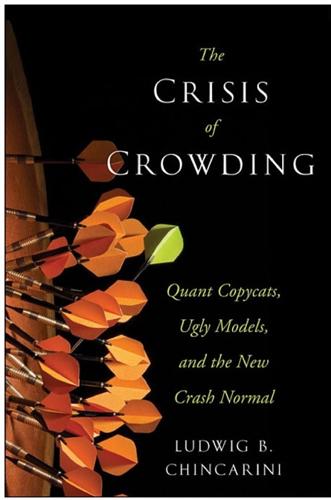
The Crisis of Crowding: Quant Copycats, Ugly Models, and the New Crash Normal
by
Ludwig B. Chincarini
Published 29 Jul 2012
Beginning in December 1999, JWM Partners launched two funds. The Relative Value Opportunity fund was a bond fund in the LTCM tradition. This was JWMP’s principal fund. The JWM Global Macro fund invested in broad global trends through currencies, commodities, stocks, and bonds. John Meriwether and Dick Leahy managed it from its May 2003 launch. The relative-value fund had a 2% management fee and a 20% incentive fee.5 The macro fund charged a 1.5% management fee and a 20% incentive fee. The global macro fund’s after-fee performance from May 2003 through December 2007 was 6.70% with 9% volatility and a 0.40 Sharpe ratio. The relative-value fund differed from LTCM mainly in risk management.
…
Its average annual return was 8.98% with an annualized volatility of 4.54%. Its Sharpe ratio was very high, at 1.25, but lower than JWMP's or LTCM’s Sharpe ratio. The Others Not all of LTCM’s former principals went to JWMP or PGAM. Gregory Hawkins and James McEntee went to Caxton Associates, a global macro hedge fund. After spending several years there, Hawkins moved to Citibank in February 2008, where he became the chief risk officer for global real estate and mortgages.11 In his Citigroup role Hawkins deals with issues of investment strategy and valuation for a significant portion of Citigroup’s balance sheet.
…
—Hans Hufschmid interview, September 30, 2010 William Krasker became a finance professor at NYU's Stern School of Business. In 2002, David Mullins formed Azimuth Trust, a fund-of-funds firm, along with Steven Gluckstern, David Modest, and Wesley Williams. Mullins served as executive director and chief economist. In 2004, he also assumed part-time responsibilities as the chief economist at Vega Asset Management, a global macro and fixed-income relative-value hedge fund group that managed approximately $12 billion in assets when he joined in 2004. He no longer works for any of these firms. The Copycat Funds Just as in the days when everyone wanted a slice of LTCM’s successful pie, other relative-value fixed-income funds joined JWMP and PGAM in seeking alpha.
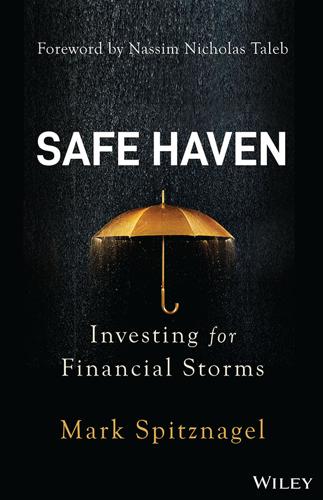
Safe Haven: Investing for Financial Storms
by
Mark Spitznagel
Published 9 Aug 2021
It provides a nice negative correlation in a crash and is always positive‐carry. (This is obviously a highly idealized version of this alpha safe haven—what any investor would choose, for better or worse.) This looks somewhat like the intended performance of systematic trend‐following commodity trading advisor (CTA) strategies, global macro and long‐volatility strategies, or even gold. And it also looks like an “at‐the‐money put” on the SPX—that you're actually paid to own. The insurance prototype on the right makes an explosive profit of 1,000% in the crash bucket and loses 100% in every other year (whenever the SPX isn't down by 15% or more).
…
See also Cost‐effectiveness analysis (CEA) with insurance, 88–92, 94–95 and Kelly criterion, 81, 84–87 and Kelly optimal bet size, 84, 86 with Nietzsche's demon, 70–72 and non‐ergodicity, 72–77 optimizing, 53–54 in Petersburg merchant trade, 48–52 in Petersburg wager, 41–43 raising, 187 with Schrödinger's demon, 68 of SPX portfolio with safe havens, 132–135 as time average, 75 25‐year compounded SPX returns, 121 for US Treasuries, 172 Geometric effect: in cost‐effectiveness analysis, 136–142 for gold, 181 in Petersburg merchant trade, 47 for real‐world safe havens, 184 and safe haven frontier, 186 tradeoff between arithmetic cost and, 152 when reshuffling returns, 143 Geometric growth, 49, 50 Geometric mean maximization criterion, 54, 80, 81 Geometric random walk, 70 Gladiators, 162 Global macro strategy, 108 Goal of investing, 15, 99 Gold, 166, 178–184, 187 Golden Theorem, 30, 67, 70, 73 Goldilocks weightings, 81, 91–92, 134 Graham, Benjamin, 9, 55, 83, 104, 151 Great Pirates, 157–160, 198 Growth: compound, 49–50, 135 compound annual growth rate, 15, 16, 20–21. See also Compound annual growth rate (CAGR) geometric, 49, 50 Growth rate of wealth, 17, 75 H Häkkinen, Mika (“The Flying Finn”), 155, 156 Hedge funds, 163, 175–178, 182–184 Hedging, 17 Hemingway, Ernest, 4, 21 Herrigel, Eugen, 13 Hindsight bias, 113 Holism: agnostic investing, 144–148 bootstrapping, 127–129.

Hedgehogging
by
Barton Biggs
Published 3 Jan 2005
Risks will also rise as hedge funds have to take larger, more concentrated positions. You greedy hogs are in the process of killing your own golden goose. It’s not only endangered, it is about to die. ” “Don’t you wish,” one of the hedge-fund guys replied from the bottom of his brandy glass. “The golden goose was plumper and sturdier than you think.” “Global macro is headed for a bust,” another guy said, looking at me. “Too much rookie money. You had better make it quick.” I just stared at him. “It’s a jungle out there in macro now,” he went on. “There are so many macro players and momentum investors, they’re bumping into each other.There must be a couple of hundred new macro hedge funds formed in the last six months by guys who think they are the next Stan Druckenmiller or Lewis Bacon.
…
In order to have some capital to invest, the maniac sold his apartment and house in the Hamptons and moved his ccc_biggs_ch02_9-20.qxd 11/29/05 6:57 AM Page 13 Golden Boys, but They Still Bleed Red 13 family into a grubby rental. God only knows what austerities he imposed on them. He opened his fund in March 2002 with a pittance of $8 million. Ian’s style evolved into a combination of global macro and global stock picking. He will own or short bonds, currencies, commodities, equity indexes, or individual stocks. Since he began, his performance has been up and down. In the years since he started, he is slightly ahead after fees of the MSCI World Equity index and is doing even better versus the S&P 500.
…
The funds of funds employ sophisticated quantitative analytics to add value by strategically allocating among the different hedge-fund classes.The hedge-fund universe is usually broken down into seven broad investment style classifications.These are event driven, fixed-income arbitrage, global convertible bond arbitrage, equity market-neutral, long/short equity, global macro, and commodity trading funds. Each has its own, unique performance cycle. One year a fund of funds will be heavy in macro and long/short equity funds and be out of or have very little in equity market neutral and convertible arbitrage. The next year the allocation will be completely different.
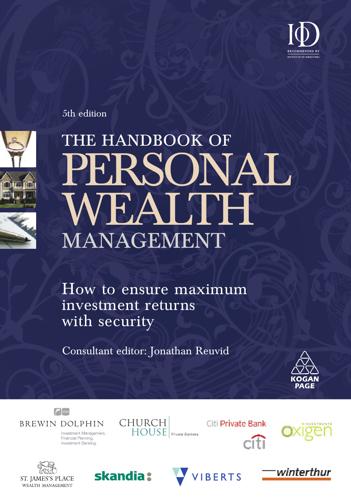
The Handbook of Personal Wealth Management
by
Reuvid, Jonathan.
Published 30 Oct 2011
Market neutral funds are further broken down into fundamental stock pickers, quantitative based (where the portfolios can be re-balanced by an optimizer ranging in frequency from once a week to quarterly) and statistical arbitrage where more frequent intra-day optimization is achieved. The goal is to derive returns (if all idiosyncratic risks are removed) through stock-picking and efficient execution. Global macro Macro funds may invest in any market, and frequently use leverage and derivatives, futures and swaps to make directional trades in equities, interest rates, currencies and commodities. Macro funds also tend to be very concentrated in their bets. Traders can use fundamental trading strategies where they examine the factors that affect the supply and demand for particular futures and forwards contracts in order to predict future prices as well as technical analysis.
…
Helier Jersey JE4 8ZQ Tel: +44 (0) 1534 888666 Fax: +44 (0) 1534 888555 Contact: Christopher Scholefield e-mail: christoper.scholefield@viberts.com ឣ 212 Index advice and analysis 13 advisor selection, investments 7 advisory services 45 et seq aircraft 47 art 49 family 45 communication, constitution, council, mission statement 45 alternatively secured pension 186 art and antiques 140 et seq auction market 158 buying and selling 157 dealers 160 EU legislation 148 how to invest in 155 et seq investment strategy 144 as investment 147 art indexes 156 art market, the 141 autocalls 41 capital gains tax 114 capital-protected and structured investments 35 et seq charities 163 et seq CAF Charity Account 169 charitable trust 172 Gift Aid 166 gifts to 111 giving strategy 165 payroll giving 169 shares, giving 172 social investment 173 tax breaks 166 commercial property, UK 59 et seq downturn, the 64 future opportunities 66 investment advantages 59 vehicles 61 investors, nature of 60 overseas investors 62 owner structures 60 corporate status, advantages 54 estate and succession planning 113 et seq family home 110 financial institutions, capital structure 40 financial planning. price v sophistication 195 expertise, value of 196 fixed interest element 38 forestry investment asset class 79 types of investment in class 82 carbon credits 85 conservation easements 85 exit strategies 90 global timber demand 88 liquidity and inflation protection 81 ____________________________________________________________ INDEX 213 opportunities 79 et seq portfolio diversification 80 real estate investment trusts 83 risk and direct investment 87 managing 89 risk-return profiles 84 sustainability 81 UK and UK performance 91 foundations, operation of 53 hedge fund strategies 25 et seq event-driven equity 28, 33 fixed income arbitrage 27 global macro 27 long/short global equities 25 credit 28 market neutral 27 multi-strategy 29 hedge funds arbitrages 33 discretionary macro 33 long/short equity 32 prime brokers 30 redemption risk 31 size reduction 29 holistic asset allocation 9 source of wealth 9 income notes 42 inheritance tax 105, 113 assets , giving away 108 trusts, lifetime gifts 108 Jersey troika offering 51 et seq Royal Court supervision 55 life insurance 110 non-domiciled beneficiaries, offshore trusts 127 shareholders in overseas companies 127 non-domicilliaries, planning after April 2008 127 ឣ overseas property market in downturn 69 et seq currency change effects 72 diversity of interest 70 future outlook 74 house price index 71, 72 quality factor 73 strongest locations 70 overseas trusts, non-domiciled settlors 126 personal pensions 191 advice 194 finding best fit 193 portfolio construction 8 diversification 22 long term correlations 18 management 8 advisory and discretionary 12 implementation and execution 20 ongoing assessment 19 profiling 10 return behaviour 17 et seq review process 7 reduction methods 106 et seq retirement 177 et seq funding requirement 180 longevity increase, effect of 178 pension consolidation 180 funding commencement 181 retirement income options 183 et seq returns distribution 14 risk budgeting 15 scheme pension 187 risks 189 self-invested personal pension (SIPP) 188, 199 et seq permissible investments 201 protected rights 205 providers 203 regulation 204 structures 200 suitability 200 taxable property 202 ឣ 214 INDEX ____________________________________________________________ small self-administered scheme (SSAS) 188 structured products, investment in 35 charges 43 taxation 43 typical functioning 37 taxation, UK resident, non-domiciliaries 121 et seq election for 123 exempt property 126 remittance basis 122 residence, domicile difference 122 temporary non-residence 125 timber investments, SE Asia 94 et seq benefits and risks 101 ethical investments 94 agroforestry 100 expert opinion 102 performance 96 Malaysia 98 scientific factors 99 Sri Lanka 97 trusts, use of 116 succession planning 118 tax-efficient 109 wills 116 charity donations 173 wine, investing in 133 et seq Bordeaux 134 buying for investment 137 choice of 134 funds 136 rationale 135 Index of advertisers African Children’s Educational Trust 167 Bestinvest 26 Brewin Dolphin Ltd 36 Burges Salmon 112 CAF (Charities Aid Foundation) 164 Church House Private Bankers 184 Citi Private Bank 6 Davies Arnold Cooper xii–xix Forsters LLP 104, 120 Fountains Plc 78 Habitat for Humanity 170–71 Harlon Management Services 76–77 Interest in Wine 132 Isle of Man Finance ix Knight Frank 68 Oxigen Investments 95 Skandia 192 St James’s Place Wealth Management 176 Viberts 52 Winterthur Life UK limited v, 198

Home: Why Public Housing Is the Answer
by
Eoin Ó Broin
Published 5 May 2019
Rather the risks to our housing system from the financial sector have simply moved from household lending to a host of investment vehicles. Writing in The Irish Times in June 2018, the economist and global justice campaigner Ann Pettifor argued that To understand Ireland’s housing crisis we need to lift our eyes from the micro- to the global macro-economy. To follow ‘the Great Wall of Money’ – $453 billion (€390 billion) – aimed at global markets in real estate. Ireland is just one country whose finite and fixed stock of land and property is massively inflated by this onslaught of unregulated capital. Dublin as a major international financial centre attracted large volumes of unregulated, cross-border flows.
…
Index 1926 census, the, 24 1946 census, the, 33 1970s as the high point in housing provision, the, 38, 45, 46 affordable housing, 168–9; and affordability criteria, 71, 160–1, 169–70, 197; and allocation restrictions, 131, 178; and not-for-profit rental accommodation, 72 Affordable Housing Scheme, the, 79, 126 affordable purchase housing model, 162–3 agrarian unrest and the land wars, 15 AHBs (Approved Housing Bodies), 58, 60, 86, 89–90, 104, 172, 174, 207; and housing provision, 62–3, 78, 88, 103, 118; reclassification into the Government sector, 119, 166, 175–6 Allen, Mike, 99 Ally, 42 amendment proposals to the Planning and Development (Housing) and Residential Tenancies Amendment Bill, 113 Analysis of Current Expenditure on Housing Supports (report), 138 apartment construction regulation, 129–30 Apollo House occupation by Home Sweet Home, 111 apprentice programmes and building skills, 201–2 Arrears of Rent (Ireland) Act (1882), 16 asset-based welfare era, the, 44, 56, 143–4 asylum seekers and Direct Provision, 237, 238 austerity budgets, 82 Bacon reports, the, 75 bailout and the Troika, the, 82 BCAR (Building Control Amendment Regulations), 211 BCMS (Government Building Control Management System), 210, 211, 212 BER energy ratings, 228, 229 Bevan, Aneurin (Nye), 32, 246–50, xvi Blackwell, John, 56 Blair, Tony, 250 Blaney, Neil, 37 Brexit contingency plan, 202 British housing bubble, the, 55 Buchanan Report (1968), the, 37 building contractors and political patronage, the, 29, 45, 215 Building Control, 209–10, 212, 214 Safe as Houses: A Report on Building Standards, Building Control and Consumer Protection 130 building cooperatives (see Public Utility Societies) building materials and consumer protection, 208–14 building practices and reduced standards, 31, 45–6, 208–14, 239 Building Society loans, 53–4 building standards, 248–9, 250 Building Standards and Consumer Protection Agency, the, 211–12 building standards in the 1930s and the Local Authorities, 31 Building Sustainable Communities (Dept of Environment statement, 2005), 72–3 building technologies, 36, 249 Buy and Renew Scheme, the, 106, 119 buy-to-let properties, 97 campaign for more public housing, 243–4 Capital Advance Loan Facility, the, 103, 172 capital appraisal processes, 173–4 Capital Assistance Scheme, the, 63, 103 capital expenditure, 34, 49, 50, 59, 82, 86, 87, 135, 165, 171 Capital Gains Tax, 68 Capital Loan Subsidy Scheme, the, 60, 63 caps to rent increases, 113, 185, xv CAS/CLSS/CALF loans, 176 casual vacancies, 168 Central Bank, the, 54, 97, 139, 146, 161; and lending criteria, 161, 199 cheap money policy, xiv, xv Choice Based Lettings, 90 Citizens Assembly, the, 230 civic surveys for Cork and Dublin (1922), 25 claimants of the rent supplement, 64 Clann na Poblachta, 32 Clapham, David, 242–3 climate change and carbon emissions, 226–7, 229, 230–1, 239 Climate Change Performance Index, the, 227 Cole, Walter L., 23 Commission of Inquiry into sewage and drainage in Dublin, the, 18 Commission on Itinerancy, the, 232 Commission on the Private Rental Sector, 76–7, 186 community sector funding, 206–8 compliance levels and rental property inspections, 190, 191 compulsory purchase powers, 24, 39, 221, 224 Congested Districts Board, the, 17 Constitution and housing, the, 100, 135, 150, 152–3, 156, 158; and private property rights, 188–9, 222, 244 Constitutional Convention, the, 100, 150, 156; 9th Plenary of, 150–2 Construction 2020 (government report), 195 construction and development costs of new homes, 198–9 Construction Industry Register, the, 210 Consumer Price Index, the, 92, 96–7, 135 Corrie, Jonathan, 136 Cosgrave, W.T., 25 cost rental affordable housing, 90, 100–1, 105, 125, 126, 161–2; non-subsidised, 179 cottage building subsidy, 31 Coveney, Simon, 99, 101–2, 110, 113, 114, 115–16, 129, 185, 219 Cowen, Barry, 107 craft unionism, 22 credit rules, 54, 224–5 Credit Union finance, 172, 178 ‘crisis,’ meaning of, 2 cross-party opposition motion on the housing crisis, 134–5 CSO (Central Statistics Office), the, 118–19, 120, 171, 195 Cumann na nGaedhael (see Free State and housing, the) current expenditure, 79, 82, 86, 87, 88, 89, 103, 138, 172, 173; and funding of Local Authorities, 172, 173 cycles in the market economy, 2 Daft.ie, 112, 125 Dáil Housing and Homeless Committee, the, 94–8, 99, 108, 109, 154, 155 Daly, Fiachra, 209 Davitt, Michael, 14, 15 Davy Group, 113 de Valera, Éamon, 27, 31, 150 Delivering Homes, Sustaining Communities (report), 77–8, 79, 80, 81, 83, 88, 107–8, 109, 218, 226, 241 delivery mechanisms for public house building programmes, 249 Democratic Programme of the First Dáil, the, 26, 244, 252–4, iv–v Department of Housing, the, 104, 112, 117, 166, 189, 199, 232, 173; and affordability pressures, 169, 197; and building standards and safety, 211, 214; and calculating existing need, 167, 168–9, 171; and homelessness figures, 110, 121–2, 123 deposit retention by landlords, 86 deregulation of mortgage markets, 55, 68–9 Designated Areas Scheme proposal, 221–2, 226 differential rents, 31, 74, 161, 172–3 direct build by Local Authorities, 103, 174 Direct Provision, 10, 125, 237, 238 Disability Federation of Ireland, the, 233 disagreements between government departments, 30–1 Discrimination and Inequality in Housing (report), 233–4 distress resolution service proposal for mortgage arrears, 101 distressed commercial assets, 147 Drudy, P.J., 66 drugs problem in Council estates, the, 50 dualist rental markets, 180, 181 Dublin Artisans Dwellings Company, the, 19 Dublin City and County Development Plans, 219 Dublin City Council and project loan finance, 172 Dublin Corporation, 18, 35–6, 215 Dublin Housing Action Campaign, the, 36 Dublin Housing Inquiry, the, 20–1, 32 Dublin Regional Homeless Executive, the, 123 Dublin Tenants Association, 184 Duffy, Charles Gavin, 15 dynamics and cycles in the Irish housing system, 42–4 dysfunctionality of the housing market, 4–5, 11–13, 46 economic policy in the 1980s, 48–9, 53–4 Economist, The (magazine), 66 education of slum dwellers and care for property, the, 30 EIB (European Investment Bank), the, 172, 178 emergency accommodation, 61, 92, 95, 98–9, 124, 235, 245; in hotels and B&Bs, 6, 10, 101, 102, 115, 121, 122 energy consumption of buildings, the, 227 Energy Performance of Buildings Directive, the, 227–8 English, Damien, 233 equality and housing, 231–8 equity withdrawal, 54 ESC (Economic, Social and Cultural rights) and the Constitutional Convention, 150–2, 153, 156 ESRI (Economic and Social Research Institute), the, 169–70, 233–4 estimates for housing units to meet demand, 36, 167, 168–9, 171 EU (European Union), the, 55, 95, 138; and fiscal constraints, 95, 98 Euro, the, 68 European Commission, the, 67 European Social Charter, the, 154 Eurostat, 118–19, 175, 176 Evening Herald (newspaper), 42 evictions, 16, 28, 43, 45, 132, 135, 186, 193, 238, 244 Fahey, Tony, 164 Fall of Feudalism in Ireland, The (book), 14 Famine (Great Hunger), the, 15 Farah, Leilani, 156–7 Feeney, John, 42 Ferriter, Diarmuid, 20, 21 Fianna Fáil, 68, 75, 81, 94, 100, 114, 127, 135, 155, 156, 235; and housing, 27–32, 35, 38, 53, 57, 241 financial and bank liberalisation, 53, 54–5, 67, 69, 138, 145, 146, 224 financial crash, the, 81, 84, 89, 90, 194–5, 243 financial incentives to builders to increase output, 201 Financial Regulator, the, 69 Fine Gael, 49, 53, 81, 93–4, 99–100, 112, 119–20, 130–1, 155, 156, 176, 241; and the Rebuilding Ireland (Action Plan for Housing and Homelessness), 101–10, 115, 133, 136, 141, 184–5, 226–7 Finnerty, Joe, 137 fire risk assessment programmes, 214 First Dáil, the, 26–7, iv–v (see also Democratic Programme of the First Dáil, the) First Programme for Economic Expansion, 35 first-time buyers, 187; grants and financial assistance, 48, 52, 125–6, 196, 201 fiscal conservatism, 22, 35 fiscal constraints, 86; caused by the Second World War, 29, 32 Flannery, Fr Austin, 42 flood plains, 216 Flynn, Anthony, 244–5 Flynn, Pádraig, 5 Focus Ireland, 99, 124 Foot, Michael, 249 free market economics and housing, 247 (see also financial and bank liberalisation) Free State and housing, the, 22–7 fuel poverty, 229 funding of public housing, 171–2, 177, 178–9 funding to Local Authorities, 28 future change in the housing system, 241–2, 245–6, 251–2 Future of Council Housing, The (study), 172–3 general election (1948), the, 32 general election (2016), the, 93–4 Georgian Society, the, 38 ghost estates (see UFHDs (Unfinished Housing Developments)) Gladstone, William E., 16 Gleeson, Eileen, 123 global macro-economy and Irish property investment, the, 139–41 global property investment trends, 147–8 globalisation, xv Good, John, 26 grant aid for energy improvement schemes, 228–9 grant aid for the private sector, 34, 104 grants: for first-time buyers, 48, 52, 125–6, 196, 201 Guinness Trust, the, 19 HAP (Housing Assistance Payment), 9, 87–8, 89, 91, 96, 97, 103–4, 110, 111, 118, 121, 137, 167, 173 Hatert Tower public housing project, Nijmegen, the Netherlands, 251 Haughey, Charles, 42 health effects of unsuitable accommodation, 8, 10 Heaney v.
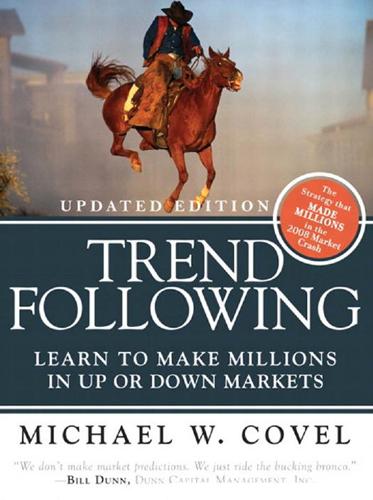
Trend Following: How Great Traders Make Millions in Up or Down Markets
by
Michael W. Covel
Published 19 Mar 2007
Even Good Traders Confuse Price The trading histories of Julian Robertson and Louis Bacon, two famous hedge fund managers, underscore the importance of price for decision making. A few years back, Julian Robertson shut his long running hedge fund down. He was a global macro trader who relied on fundamentals for decision making. He had a close relationship with another global macro trader, Louis Bacon. Bacon is extremely secretive to the extent that it’s nearly impossible to find out his performance numbers unless you are a client. I do know from the little bit of writing available on Bacon that he’s pulled hundreds of millions, if not billions, of profit from the marketplace.
…
University of California at Berkeley, Department of Economics. Working Paper E00-281 (June 3, 2001). 427 428 Trend Following (Updated Edition): Learn to Make Millions in Up or Down Markets Oldest CTAs in the Industry Have Survived and Thrived. Barclay Trading Group Roundtable, Vol. 6, No. 3 (Third quarter, 1995). Peltz, Lois. The Big Global Macro Debate. Market Barometer (April 1998): 9–13. Peltz, Lois. The New Investment Superstars. Canada: John Wiley & Sons, Inc., 2001. Peters, E.E. Fractal Market Analysis. New York: John Wiley & Sons, Inc., 1994. Rand, Ayn. Atlas Shrugged. New York: Random House, 1957. Rand, Ayn. The Fountainhead. New York: Bobbs-Merrill Company, 1943.

Shocks, Crises, and False Alarms: How to Assess True Macroeconomic Risk
by
Philipp Carlsson-Szlezak
and
Paul Swartz
Published 8 Jul 2024
Treating news as entertainment distorts the debate and the public consciousness of macro risks. Precisely because many risks are grossly overstated, the rate of false alarms is high. For every true crisis there are many false alarms. In this book we will encounter many risks—and belittle none. There is little doubt that the global macro backdrop is less benign than it was during the past few decades and that we cannot dismiss systemic risks. But a habit of assuming the worst and then making the analysis fit that mental model does not help us spot true risk. The doomsaying is so ubiquitous that we have grown numb to it. In chapter 1, we already encountered the recent string of false alarms about a Covid depression, an inflation regime break, a cascade of emerging market crises, and inevitable recession.
…
Many of our arguments and narratives are developed through countless discussions with executives and investors. Their questions often shape our research agenda. And our research output spurs the next round of conversations. This flywheel keeps us on our toes, forces us to evolve, and allows us to paint on a canvas that has no real edges. This book benefits from years of covering global macro in this way. Therefore, we start by thanking the hundreds of clients that have been our counterparts in these discussions. Of course, none of this would be possible without a formidable platform to stand on. We’re indebted to Rich Lesser and Martin Reeves for inviting us to make our professional home at BCG and for their support; to Christoph Schweizer, François Candelon, Sharon Marcil, Tawfik Hammoud, Rohan Sajdeh, Kilian Berz, and Carol Liao for encouraging us to write this book; and indeed to the wider BCG partnership, with its unparalleled ability to engage leaders across the entire spectrum of the real and financial economy around the world.
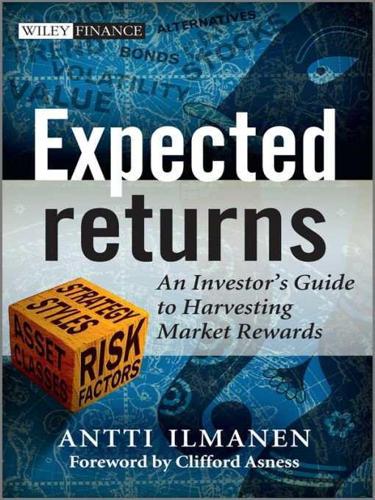
Expected Returns: An Investor's Guide to Harvesting Market Rewards
by
Antti Ilmanen
Published 4 Apr 2011
Single-manager HFs are often classified into some asset or style bucket and are expected to focus on investments in their area of specialization. Funds may be classified by asset class (mainly equity vs. fixed income, but narrower domains are also used) and styles (directional, arbitrage, event driven, opportunistic). The most popular categories have tended to be equity long–short and global macro/multi-strategy. One interesting dimension involves convergent strategies (which benefit from normalization of relative values and declining volatilities: many arbitrage and market-neutral strategies fit this description) vs. divergent strategies (which benefit from new trends and volatility: macro and CTA).
…
Figure 11.10 shows that even when it comes to simple equity market correlations, HF index returns are highly market directional, in contrast to the ideals of market neutrality and absolute returns. All single HFs do not of course share this embarrassing characteristic. Among HF subsectors, short-sellers and trend-followers have a negative equity market correlation; of the other subsectors, global macro and equity market neutral funds have the lowest—but still positive—equity correlations. Downside beta. Simple equity market correlations may underestimate the propensity of HFs to lose money in bad times. Looking at the worst 12 months for the HFR index between 1990 and 2009, half occurred in 2008 (October, September, January, November, July, March).
…
Government securities include nominal and inflation-linked bonds and these are issued by countries with varying credit qualities and currency situations. The spectrum of exposures to credit is so wide that it cannot be briefly described. Real estate includes (at the time of writing) hot China, cold Florida, and dull Germany. Commodity futures include materials as different as oil, gold, and corn. Hedge funds include equity market neutral, global macro, fixed income arbitrage, and just about every other strategy that has ever been devised. The proposed approach is simpler and more arbitrary than the econometric multi-factor model discussed in Section 16.1, which also offers a consistent tool for multi-asset-class investors. In practice, different types and frequencies of data as well as different return drivers across asset classes may make this building block approach a more practical tool.

The Road to Ruin: The Global Elites' Secret Plan for the Next Financial Crisis
by
James Rickards
Published 15 Nov 2016
Taleb was right. Most traders on Wall Street are not super-talented. Decamping from an investment bank to a hedge fund does not improve a trader’s talent; it just moves the compensation model in favor of the trader. Still, there are a small number of hedge funds managed by highly talented traders using global macro, long-short equity, and arbitrage strategies. They are worth their fees, yet difficult to find. The superstructure of a robust all-weather portfolio to preserve wealth in the coming collapse and mitigate an ice-nine asset freeze looks like this: Physical gold and silver, 10 percent (coins and bars, no numismatics) Cash, 30 percent (some in physical notes) Real estate, 20 percent (income producing or agricultural) Fine art fund, 5 percent (museum quality only) Angel and early venture capital, 10 percent (FinTech, natural resource, water) Hedge funds, 5 percent (global macro, long-short equity, or arbitrage) Bonds, 10 percent (high-quality sovereigns only) Stocks, 10 percent (natural resource, mining, energy, utilities, tech only) A family business should not be counted among investible assets.
…
The superstructure of a robust all-weather portfolio to preserve wealth in the coming collapse and mitigate an ice-nine asset freeze looks like this: Physical gold and silver, 10 percent (coins and bars, no numismatics) Cash, 30 percent (some in physical notes) Real estate, 20 percent (income producing or agricultural) Fine art fund, 5 percent (museum quality only) Angel and early venture capital, 10 percent (FinTech, natural resource, water) Hedge funds, 5 percent (global macro, long-short equity, or arbitrage) Bonds, 10 percent (high-quality sovereigns only) Stocks, 10 percent (natural resource, mining, energy, utilities, tech only) A family business should not be counted among investible assets. It should be held outside this portfolio. All of these assets, except cash, stocks, and bonds, can be held by direct title in physical or contractual form without reliance on banks, brokers, exchanges, or digital records.
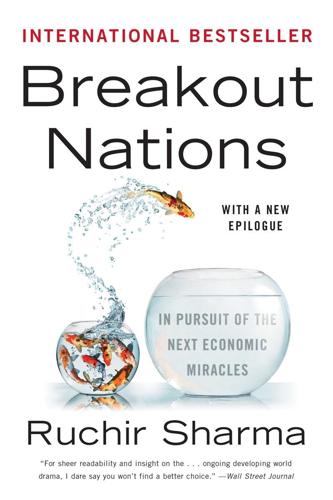
Breakout Nations: In Pursuit of the Next Economic Miracles
by
Ruchir Sharma
Published 8 Apr 2012
At the same time, investors in the West have lost faith in the dynamism of the United States and Europe and are turning east and south, partly in desperation. In 2009 and 2010 hundreds of billions of dollars went into emerging-market funds that made little or no distinction between Poland and Peru, India and Indonesia. Such “macro mania”—an obsession with global macro trends—operates on the assumption (at least temporarily correct during the boom years) that knowledge of the broad movements in the world economy is all you need to evaluate any particular asset class. The result is that the prices of stocks in all the mainstream emerging markets have been moving together in increasingly synchronized formations.
…
“The Aftermath of Financial Crises.” American Economic Review, vol. 99, no. 2, 2009, pp. 466–472. Rogoff, Kenneth. “Technology and Inequality.” Project Syndicate, July 6, 2011. http://www.project-syndicate.org/commentary/technology-and-inequality. Thiel, Peter. “The Technological Challenge.” Speech given at Credit Suisse 2012 Global Macro Investors Conference, May 17, 2012. INDEX Page numbers in italics refer to illustrations, maps, and tables. Abacha, Sani, 210 Abidjan, 208 Abu Dhabi, 219 Abuja, 213 accounting, 150 “Adam Smith,” 234 Adcorp, 181 advertising, 53–54 affirmative action, 148–51 Africa, viii, 1, 38, 68, 89, 113, 123, 162, 183–84, 204–9, 224, 225, 245, 246 see also specific countries African Century, 1 African National Congress (ANC), 173–76, 177, 178, 180, 183 agriculture, 9, 17–18, 21, 22, 27, 38, 41–42, 44, 54, 57, 64, 66, 83, 142, 164–65, 224–25, 231–32 AIADMK, 48 airline industry, 65, 141, 213 airports, 64, 85, 138, 140, 141, 213, 231 AKB48, 167 AK Party (AKP), 115–16, 117, 120–21, 123, 124–25, 127, 145–46 Alabama, 162, 247 alcohol, 90, 126, 181 Algeria, 204 alternative energy, 226–27 Amazon, 238, 239 Ambani, Mukesh, 79 America Movil, 75, 81–82 Amin, Idi, 194–95 Anatolia, 123–27 “ANC rate of growth,” 174 Andhra Pradesh, 51 Andreessen, Marc, 238–39 Anglo, 178 Angola, 9, 191, 210 Anjelique nightclub, 124 Ankara, 115, 124, 125, 146 anti-Semitism, 118, 149 antitrust laws, 47, 181–82 apartheid, 171, 173–75, 178, 179, 181–82, 183 apartment blocks, 16 Apple, 238 Aquino, Benigno “Noynoy,” III, 139, 140–41, 245 Aquino, Corazon, 139 Arabs, 88, 122, 127, 214–21 Arab Spring, 88, 127, 215–16 Arcelik, 120 archipelago capitalism, 136, 141 Argentina, 27, 64, 89, 189–90, 223, 254 Armenia, 9 armored cars, 71 Arroyo, Gloria Macapagal, 139 Asia, 4, 7, 8, 10, 20, 40–41, 42, 44, 46, 65, 95, 113, 123, 131–32, 146, 166, 196–97, 208, 236, 245 see also specific countries Asian financial crisis (1997–98), 4, 8, 18, 28–29, 70, 131–35, 143, 146–50, 155–56, 159–60, 169, 251, 253 “aspirational” goods, 54 assets, 59, 134–35, 228 Association of Southeast Asian Nations (ASEAN), 208–9 AT&T, 9 Atatürk, Kemal, 113–14, 127 Australia, 26, 180, 183, 223 Austro-Hungarian Empire, 104 authoritarian regimes, 29–30 auto industry, 31, 52, 54, 75, 85, 86, 103, 120, 121, 126, 139, 144, 156, 158, 161–63, 165, 173, 227 Babacan, Ali, 121 Babangida, Ibrahim, 210 baby-boom generations, 21–22, 37–38 Badawi, Abdullah, 151–52 Bahrain, 214, 216–17, 218 Bakrie family, 134 balance-of-payments, 141, 150 balance sheets, 134 Bali, 140 Balkan nations, 101, 253 Baltic nations, 100, 101, 253 Bamako, 208 Bangalore, 37 Bangkok, 142, 143–44, 254 Bangladesh, 23, 157, 197 Bank Credit Analyst, 226 banking industry, x, 5–6, 12, 24, 25, 26, 42, 62, 69–70, 81, 82, 92–94, 102, 103, 105–7, 115, 116, 119–20, 125, 133–34, 135, 146, 149–50, 151, 168, 190, 202, 207–8, 222, 228, 229, 249, 252 “bank robbery law,” 105 bankruptcies, 134, 252 Barick Gold, 180 Batista, Eike, 71 beer, 75 Beijing, 24, 31, 198, 227 Belarus, 89 Bellini cocktails, 12, 61, 66 Benin, 205 Berlin, 16 Bernanke, Ben, 6 Bhagalpur, 52 Bharatiya Janata Party (BJP), 48–49 “big bang” reforms, 8–9 Bihar, 37, 49, 50–51, 52, 53, 55 billionaires, viii, 25, 44–47, 45, 71, 78, 79–80, 91, 93, 131–32, 169, 227–28, 254 biotechnology, 167 Birmingham, 16 BlackBerry, 71 “black diamonds,” 180–81 Black Economic Empowerment (BEE), 182 blackouts, 177 Blair, Tony, 89 BMW, 86 bodyguards, 78, 187, 190–91 Bolivia, 89 Bollywood, 44, 47, 167 Bolsa Familia income supports, 41 bonds, 59, 228 “boomophobia,” 157 “boom years,” 7–8, 24, 157 Bosporus, 111, 116, 124 Boston Consulting Group, 91, 246–47 Botha, P.
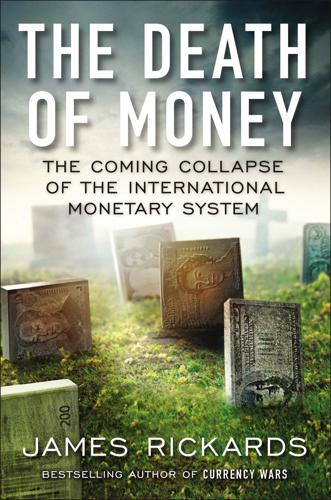
The Death of Money: The Coming Collapse of the International Monetary System
by
James Rickards
Published 7 Apr 2014
The answer is undisclosed, but either way the BIS stood ready to facilitate such nontransparent gold market activity as it had done for the Nazis and others since 1930. Some of the most compelling evidence for manipulation in gold markets comes from a study conducted by the research department of one of the largest global-macro hedge funds in the world. This study involved two hypothetical investment programs over a ten-year period, from 2003 to 2013. One program would buy gold futures at the New York COMEX opening price every day and sell at the close. The other program would buy gold at the beginning of after-hours trading and sell just before the COMEX open the following day.
…
High-quality art can be acquired for more modest sums than $10 million through pooled investment vehicles that offer superb returns, although such vehicles lack the liquidity and portability of outright art ownership. Alternative funds. This includes hedge funds and private equity funds with specified strategies. Hedge fund strategies that are robust to inflation, deflation, and disorder include long-short equity, global macro, and hard-asset strategies that target natural resources, precious metals, water, or energy. Private equity strategies should likewise involve hard assets, energy, transportation, and natural resources. Funds relying on financial stocks, emerging markets, sovereign debt, and credit instruments carry undue risk on the paths that lie ahead.
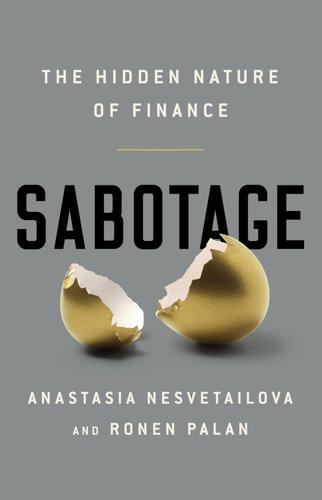
Sabotage: The Financial System's Nasty Business
by
Anastasia Nesvetailova
and
Ronen Palan
Published 28 Jan 2020
But even if, despite the lengthy lists of cases and the hefty fines, one would still wish to describe these episodes as products of the behaviour of rogue elements, it still remains to be explained why rogue elements flourish in finance and, specifically, why they seem to flourish at a particular time and place. The crisis of 2007–9 is commonly explained as the outcome of poor global macroeconomic policies and inadequate regulatory frameworks. But what is the connection between global macro-policies and banks having lost their moral compass? If these incidences are isolated cases of failed governance, how come the most sophisticated, mobile financial corporations which invest billions in IT to cut down a fraction of time in algorithmic trading, and in controlling asset values that reach trillions of dollars, were so poorly managed that one hand did not know what the other had been doing for such a long time?

The Rise and Fall of Nations: Forces of Change in the Post-Crisis World
by
Ruchir Sharma
Published 5 Jun 2016
New York Times, July 24, 2015. Pathiparampil, Bino. “India-Pharma: US Market Remains a Great Opportunity.” IIFL Institutional Equities, 2013. Pearson, Charles. On the Cusp: From Population Boom to Bust. New York: Oxford University Press, 2015. “Picking Apart the Productivity Paradox.” Goldman Sachs, Global Macro Research, October 5, 2015). “PISA Scores: Why Would You Invest in Greece Instead of Poland?” Renaissance Capital, December 4, 2013. Redenius, Jeremy. “The Challenges to Feeding the World May Not Be So Challenging After All.” Bernstein Research, December 6, 2013. Redman, Alex. “Latin America in 2015: The Most Challenged Emerging Market Region.”
…
Goldman Sachs Global Investment Research, January 13, 2015. Forbes, Kristin. “Financial ‘Deglobalization’?: Capital Flows, Banks, and the Beatles.” Bank of England, 2014. Freund, Caroline. “Current Account Adjustment in Industrialized Countries.” International Finance Discussion Papers, 2000. “Global Macro Jottings: Financial Deglobalization.” VTB Capital, November 20, 2014. Harvey, Oliver, and Robin Winkler. “Dark Matter: The Hidden Capital Flows That Drive G10 Exchange Rates.” Deutsche Bank Markets Research, March 6, 2015). Hyman, Ed. “Bond Yields Up But S&P Advances.” Evercore ISI, February 18, 2015.
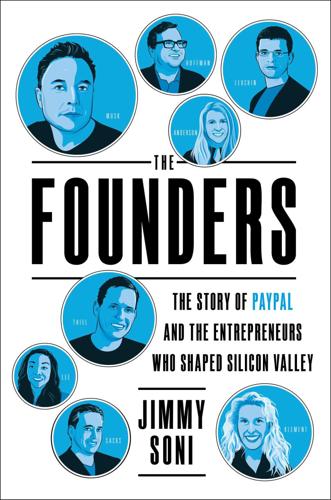
The Founders: The Story of Paypal and the Entrepreneurs Who Shaped Silicon Valley
by
Jimmy Soni
Published 22 Feb 2022
So upon graduation, Ken Howery signed up with Thiel Capital. * * * Soon thereafter, the dot-com boom began—and right in Thiel and Howery’s backyard. Internet firms started listing themselves alongside legacy American companies on stock exchanges, and billions of dollars came pouring westward. While Thiel had found some success as a global macro investor, he saw in the craze for all things internet a lucrative opportunity to invest in promising technology start-ups. If Thiel were to flourish in this arena, he believed his firm needed the right address, namely on Sand Hill Road in Menlo Park, the home of Silicon Valley’s preeminent venture capital firms.
…
Instead, Thiel left for international travel in the wake of the announcement, leaving David Sacks in charge. Sacks had been serving as COO, and some anticipated that he may be promoted to CEO in PayPal’s post-acquisition future. Even as the deal was being finalized, the dispersion began. Thiel started planning his next move: a return to his global macro investment fund. Jack Selby, Ken Howery, and several other PayPal alums joined him and assisted in the preparations. “We were up trading by October,” Selby said. Thiel sent a brief departure note to the full company on Thursday, October 3, 2002: All: Effective at the close of markets today, eBay completed its acquisition of PayPal.

Adaptive Markets: Financial Evolution at the Speed of Thought
by
Andrew W. Lo
Published 3 Apr 2017
In October 2004, my former students Nicholas Chan, Mila Getmansky, Shane M. Haas, and I presented the results of statistical tests that measured this form of systemic risk in the hedge fund industry.25 We saw an increase in risk especially in the long/short equity category—the same one involved in the Quant Meltdown—and in global macro, a category of hedge fund bets on international macroeconomic developments from the beginning of 2001. Most notably, we saw a spike in systemic risk starting in mid-2002, perhaps related to the bear market in the U.S. stock market. Did we narrowly miss an earlier financial crisis? Our results might have languished among the participants of the NBER conference (unlike my first such conference, this talk was well received), mainly financial economists and their graduate students.
…
D., 169–170, 172 Hamlet, 141–142 Hanamaka, Yasuo, 61 Hasanhodzic, Jasmina, 268 Haushofer, Johannes, 414 Hausman, Jerry, 127 Hawkins, Jeff, 130, 131, 163, 183 Hayek, Friedrich, 219 hedge funds, 4, 7, 203, 221, 222–223, 224, 225, 248, 277, 398; decimalization and, 327–328; defined, 227–228; evolutionary history of, 230–235; global macro, 317; indexes of, 267; mathematization of, 235–240; in mortgage market, 299, 301; public revulsion toward, 335; in Quant Meltdown (August 2007), 283–295, 321; resilience of, 243–244; Russian bond default and, 241–244; techniques of, 228–230, 267, 268; warning signs from, 316, 376 hedging, 195–196, 229–230 Hegel, Georg Wilhelm Friedrich, 219 hemophilia, 147, 160 Herodotus, 155 heuristics, 113, 182, 187, 312, 323; affect heuristic, 84; of buyers and sellers, 208, 224–225; defined, 66; evolution of, 183, 184, 185, 188, 198; imprecision of, 189; optimizing, 193, 197, 200; in practice, 179, 180, 183, 184–185; probability-matching, 191–193, 195, 200; representativeness heuristic, 67–68, 69; reputational, 305–306, 309; research on, 216–217; in retirement planning, 252–253 high-frequency trading, 245–246, 324–325, 360 highly active antiretroviral therapy (HAART), 403 Hill, Phil, 382 Hirshleifer, Jack, 217 Hirt, Edward R., 65 HIV, 403 hog prices, 28–33, 34 Holmes, Oliver Wendell, 171 Holocaust, 171, 174 Homo economicus, 44, 91, 96, 101, 152, 162, 175, 183, 253, 365, 393; amorality of, 336, 345; efficient markets compatible with, 70; in farming, 35; idiosyncratic risk and, 198–203; left hemisphere and, 113–117; as orthodoxy, 37, 51, 73–74, 217; prefrontal cortex likened to, 122; reductionism of, 75, 97–98, 108, 176, 186, 187, 254; Simon’s skepticism toward, 178–180, 183; on Wall Street, 92–93.

Tribe of Mentors: Short Life Advice From the Best in the World
by
Timothy Ferriss
Published 14 Jun 2017
After selling his interest in The Princeton Review, Adam turned his attention in the early ’90s to the then-emerging field of artificial intelligence, developing a program that could analyze text and provide human-like commentary. He was later invited to join a well-known quant fund to develop statistical trading models, and since, he has established himself as an independent global macro advisor to the chief investment officers of a select group of the world’s most successful hedge funds and ultra-high-net-worth family offices. What is the book (or books) you’ve given most as a gift, and why? Or what are one to three books that have greatly influenced your life? Our unconscious mind is working all the time, processing orders of magnitude more information, and with astoundingly greater facility, than is our conscious mind.
…
“Ignore the concept of ‘being yourself.’ Of course this is literally true by definition, but it is a way to avoid self-improvement.” Adam Fisher ADAM FISHER is the head of macro and real estate at Soros Fund Management as of September 2017, before which he co-founded CommonWealth Opportunity Capital, a global macro hedge fund with assets under management of approximately $2.2 billion. Adam formed CommonWealth in 2008 and acted as its chief investment officer, building on his extensive experience investing in and managing public and private companies around the globe. Prior to CommonWealth, he co-founded Orient Property Group in 2006, focusing on investments throughout the Asia Pacific region.
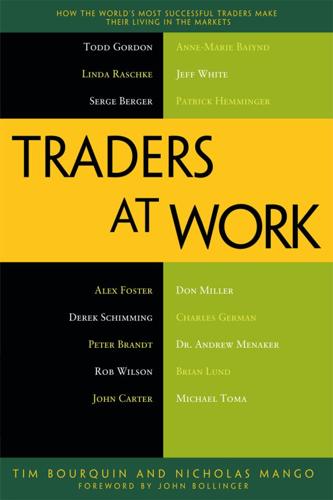
Traders at Work: How the World's Most Successful Traders Make Their Living in the Markets
by
Tim Bourquin
and
Nicholas Mango
Published 26 Dec 2012
Hemminger: Well, that’s a great question. Two of the basic tenets of being a successful longer-term trader are, number one, realizing that markets have changed and, number two, being flexible enough to evolve accordingly. Being a one-trick pony just is not a formula for long-term success, because, from a global macro perspective, the world is changing. My specialty in equity spreads was US equity indexes versus European equity indexes. Because my main benchmark is the S&P, I would spread that versus FTSE, versus DAX, versus Euro Stoxx 50. But beginning in the middle of 2010, the opportunity in those spreads slowed down.
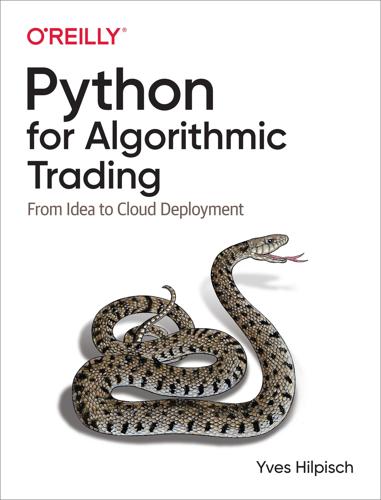
Python for Algorithmic Trading: From Idea to Cloud Deployment
by
Yves Hilpisch
Published 8 Dec 2020
Oanda trading application fxTrade Practice Contracts for Difference (CFDs) For more details on CFDs, see the Investopedia CFD page or the more detailed Wikipedia CFD page. There are CFDs available on currency pairs (for example, EUR/USD), commodities (for example, gold), stock indices (for example, S&P 500 stock index), bonds (for example, German 10 Year Bund), and more. One can think of a product range that basically allows one to implement global macro strategies. Financially speaking, CFDs are derivative products that derive their payoff based on the development of prices for other instruments. In addition, trading activity (liquidity) influences the price of CFDs. Although a CFD might be based on the S&P 500 index, it is a completely different product issued, quoted, and supported by Oanda (or a similar provider).
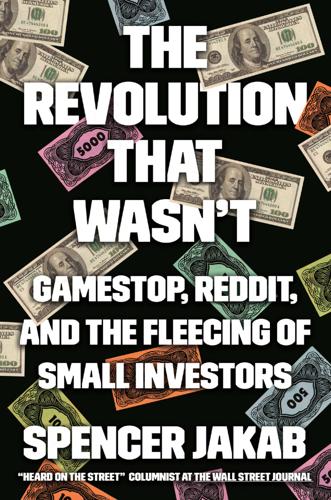
The Revolution That Wasn't: GameStop, Reddit, and the Fleecing of Small Investors
by
Spencer Jakab
Published 1 Feb 2022
BACK TO NOTE REFERENCE 4 John McCrank, “Robinhood Now a Go-to for Young Investors and Short Sellers,” Reuters, March 2, 2021. BACK TO NOTE REFERENCE 5 Chapter 7: Get Shorty Chuck Mikolajczak, “Tesla Bears Suffer Record Short-sale Loss in 2020: S3 Partners,” Reuters, January 21, 2021. BACK TO NOTE REFERENCE 1 “Top of Mind,” Goldman Sachs Global Macro Research, February 25, 2021, www.goldmansachs.com/insights/pages/gs-research/the-short-and-long-of-recent-volatility-f/report.pdf. BACK TO NOTE REFERENCE 2 House Committee on Financial Services, “Following Recent Market Instability, Waters Announces Hearing on Short Selling, Online Trading Platforms,” press release, January 28, 2021, https://financialservices.house.gov/news/documentsingle.aspx?

Masters of Scale: Surprising Truths From the World's Most Successful Entrepreneurs
by
Reid Hoffman
,
June Cohen
and
Deron Triff
Published 14 Oct 2021
As founder, Ray shepherded Bridgewater from a one-man operation run out of his apartment to the largest hedge fund in the world, managing some $160 billion for about 350 institutional clients globally. But it wasn’t a straight path. The story begins back in October 1982, in the halls of the U.S. Congress. Ray was a smart-looking young global macro investor in a dark suit and striped tie, who’d gotten attention for predicting that Mexico was going to default on its foreign debts. He saw a global debt crisis coming—a rolling recession, even total economic collapse—and now Congress had asked him to testify about this. Ray wasn’t the only one calling the future this way.
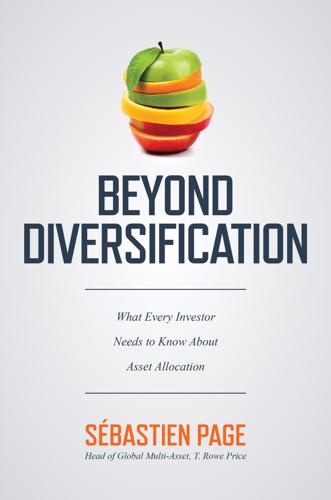
Beyond Diversification: What Every Investor Needs to Know About Asset Allocation
by
Sebastien Page
Published 4 Nov 2020
However, high cash returns usually coincide with high expected inflation. Some of my colleagues can effortlessly move between nominal and real returns, local and foreign returns, etc. They mentally account for spot and forward rates, interest rate differentials, and inflation differentials on the fly. I’ve been involved in global macro investing for many years, and I used to oversee a currency overlay business, but I’m embarrassed to say that I still struggle with these problems. I always need to pause and think through them. To make it easy, let’s focus on a US investor who wants to forecast nominal returns. Betas and Depressingly Low Expected Returns Now that we have estimates for the risk-free rate (1.7%) and the market risk premium (1.9%), all we need are the asset class betas.
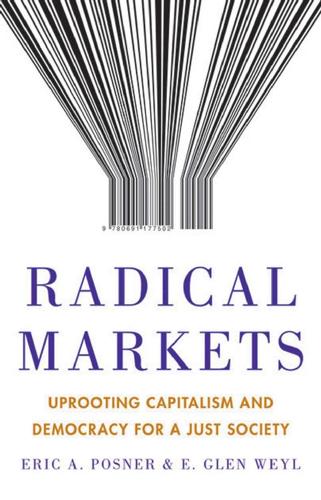
Radical Markets: Uprooting Capitalism and Democracy for a Just Society
by
Eric Posner
and
E. Weyl
Published 14 May 2018
Marshall E. Blume & Donald B. Keim, Institutional Investors and Stock Market Liquidity: Trends and Relationships, 5 (working paper, Wharton School, University of Pennsylvania, 2012), http://finance.wharton.upenn.edu/~keim/research/ChangingInstitutionPreferences_21Aug2012.pdf. 17. Business Insider’s Global Macro Monitor, Q3 2012; http://www.businessinsider.com/who-owns-the-us-equity-market-2013-1. 18. Joseph A. McCahery, Zacharias Sautner, & Laura T. Starks, Behind the Scenes: The Corporate Governance Preferences of Institutional Investors, 71 Journal of Finance 2905 (2016). 19. OECD Institutional Investor Statistics, 2008–2015.
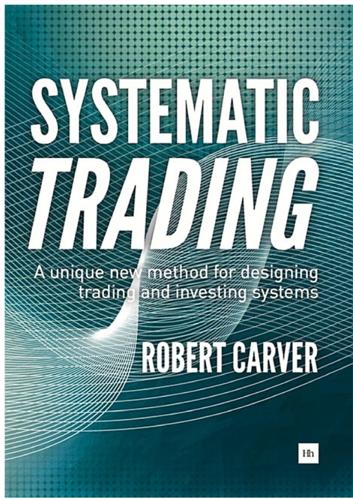
Systematic Trading: A Unique New Method for Designing Trading and Investing Systems
by
Robert Carver
Published 13 Sep 2015
He initially traded exotic derivative products for Barclays Investment Bank and then worked as a portfolio manager for AHL – one of the world’s largest systematic hedge funds – before, during and after the global financial meltdown of 2008. He was responsible for the creation of AHL’s fundamental global macro strategy and then managed the fund’s multi-billion dollar fixed income portfolio before retiring from the industry in 2013. Robert, who has bachelors and masters degrees in Economics, now systematically trades his own portfolio of futures and equities. Every owner of a physical copy of this version of Systematic Trading can download the eBook for free direct from us at Harriman House, in a format that can be read on any eReader, tablet or smartphone.

High-Frequency Trading: A Practical Guide to Algorithmic Strategies and Trading Systems
by
Irene Aldridge
Published 1 Dec 2009
Foreign exchange markets profitably accommodate three types of players with distinct goals: high-frequency traders, longer-term investors, and corporations. The main objective of high-frequency traders is to capture small intra-day price changes. The main objective of longer-term investors is to gain from global macro changes. Finally, the main objective of corporate currency managers is usually hedging of cross-border flows against adverse currency movements—for example, a Canadian firm selling in the United States may choose to hedge its revenue stream by purchasing puts on USD/CAD futures. The flows of the three parties can be quite distinct, as Table 4.5 illustrates.

The Bond King: How One Man Made a Market, Built an Empire, and Lost It All
by
Mary Childs
Published 15 Mar 2022
After the Investment Committee meeting in June 2013, fed up with pushback on his behavior, these supposed “messes” he made so constantly, Gross snapped. “I have a forty-one-year track record of investing excellence,” he sniped at El-Erian. “What do you have?” This could only have been a reference to GMAF, the “global macro” fund, ranked last against its peers. And/or that he only managed 1 percent of the firm’s total assets. “I’m tired of cleaning up your shit,” El-Erian shot back. The room was stunned. It was clear El-Erian was losing his ability to calm Gross. Or he was losing the will to do it. Gross could usually bounce back from bad interactions—traders cite as one of his best personality points that if a problem got resolved, Gross would walk in the next day with no apparent memory of the issue.
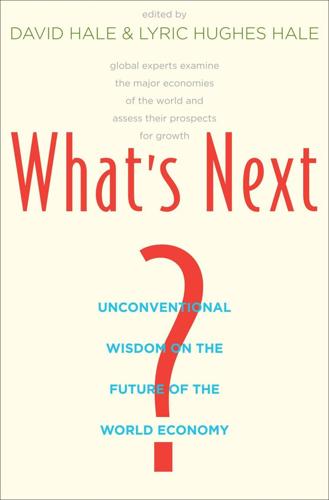
What's Next?: Unconventional Wisdom on the Future of the World Economy
by
David Hale
and
Lyric Hughes Hale
Published 23 May 2011
CNBC.com, “Oil Price to Average USD 75.40 in 2010,” November 25, 2009, www.cnbc.com/id/34145910 (link expired as of September 3, 2010). 40. LCM Research, “Special Report,” November 19, 2009, 9. 41. LCM Research, “The New Black (Gold): Oil Provides Haven against Dollar Weakness, Driving Physical Response to Price Breakout,” LCM Global Macro Focus, November 2, 2009, 1–2. 42. The share of non-hydro renewable energy sources is expected to rise to 18 percent in 2030 in the IEA 450 scenario, compared to 8.6 percent in the reference scenario and to 2.5 percent in 2007. 43. Albert Bressand, “The Future of Producer-Consumer Cooperation: A Policy Perspective,” in Global Energy Governance: The New Rules of the Game, ed.
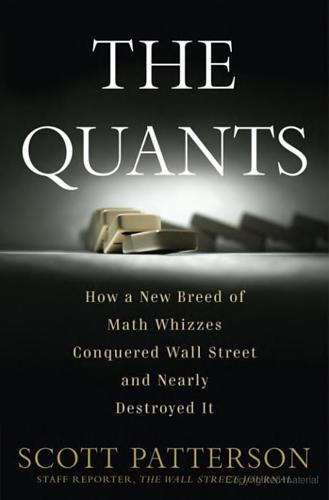
The Quants
by
Scott Patterson
Published 2 Feb 2010
In a display of confidence in his strategies, Asness put a large chunk of his own money into AQR funds, including $5 million in the Absolute Return Fund. He also put $5 million into a new product AQR launched in 2008 called Delta, a low-fee hedge fund that quantitatively replicated all kinds of hedge fund strategies, from long-short to “global macro.” Several of AQR’s funds had gotten off to a good start for the year, particularly his convertible bond funds—the decades-old strategy laid out by Ed Thorp in Beat the Dealer that had launched Citadel and hundreds of other hedge funds in the 1990s. Asness even dared to think the worst, finally, was behind him.

A Demon of Our Own Design: Markets, Hedge Funds, and the Perils of Financial Innovation
by
Richard Bookstaber
Published 5 Apr 2007
An alternative classification matrix, which I developed in 2001, attempts to overcome this problem, but in so doing reveals the existential issue for hedge funds.1 This approach classifies hedge funds by five characteristics: 1. Asset class. The broadest category, it defines the market in which the fund operates. These include fixed income, equities, currencies, and commodities. There can also be a “multiclass” to capture “none or some of the above,” and this specifically includes global macro funds. 245 ccc_demon_243-254_ch11.qxd 2/13/07 A DEMON 1:47 PM OF Page 246 OUR OWN DESIGN 2. Direction. As the name implies, the direction of the manager’s activity in the asset: long, short, long/short, and neutral. We might think of a long strategy as having an average correlation with the relevant index of over .5 (the figure indicates the strength of the relationship; a perfect correlation equals 1); long/short as being between –.5 and .5; and neutral as being between –.2 and .2.

Exponential: How Accelerating Technology Is Leaving Us Behind and What to Do About It
by
Azeem Azhar
Published 6 Sep 2021
(See Daisuke Wakabayashi, ‘Google’s Shadow Work Force: Temps Who Outnumber Full-Time Employees’, The New York Times, 28 May 2019, section Technology <https://www.nytimes.com/2019/05/28/technology/google-temp-workers.html> [accessed 17 May 2021].) 20 ‘Employment – Employment Rate – OECD Data’, TheOECD <http://data.oecd.org/emp/employment-rate.htm> [accessed 14 September 2020]. 21 ‘Unemployment, Total (per cent of Total Labor Force)’, World Bank Data <https://data.worldbank.org/indicator/SL.UEM.TOTL.ZS> [accessed 14 September 2020]. 22 Hans P. Moravec, Mind Children: The Future of Robot and Human Intelligence (Cambridge, MA: Harvard University Press, 1988), p. 15. 23 ‘Liquidity, Volatility, Fragility’, Goldman Sachs Global Macro Research, 68, June 2018. 24 John Gittelson, ‘End of Era: Passive Equity Funds Surpass Active in Epic Shift’, Bloomberg, 11 September 2019 <https://www.bloomberg.com/news/articles/2019-09-11/passive-u-s-equity-funds-eclipse-active-in-epic-industry-shift> [accessed 14 October 2020]. 25 ‘March of the Machines – The Stockmarket Is Now Run by Computers, Algorithms and Passive Managers’, The Economist, 5 October 2019 <https://www.economist.com/briefing/2019/10/05/the-stockmarket-is-now-run-by-computers-algorithms-and-passive-managers> [accessed 14 October 2020]. 26 Michael Polanyi and Amartya Sen, The Tacit Dimension (Chicago, IL: University of Chicago Press, 2009), p. 4. 27 David Graeber, Bullshit Jobs: A Theory (New York: Simon & Schuster, 2018), p. 236 28 Carl Benedikt Frey, The Technology Trap: Capital, Labor, and Power in the Age of Automation (Princeton, NJ: Princeton University Press, 2019), p. 311. 29 Staci D.
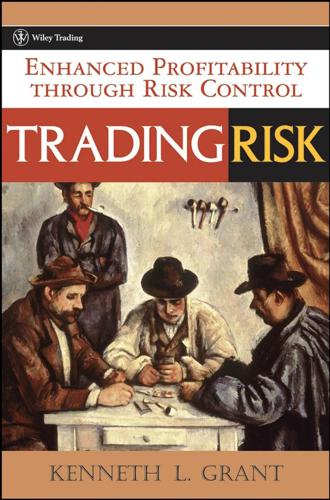
Trading Risk: Enhanced Profitability Through Risk Control
by
Kenneth L. Grant
Published 1 Sep 2004
Due to the nonlinear and (often) leveraged nature of options portfolios, this process can often identify exposures that a VaR program or other riskestimation methodology might otherwise miss. It is also not unusual for risk managers with oversight responsibility of large portfolios involving multiple asset classes (e.g., global macro portfolios) to contrive scenarios under which all financial instruments either decouple from each other or begin to move in lockstep—in dramatic adverse fashion. These so-called event-risk scenarios are very prevalent in the risk modeling of large financial institutions and provide the considerable benefit of informing all involved parties (including high-level decision makers who are perhaps somewhat removed from the day-to-day portfolio management process) as to the institutions’ best estimates of worst-case loss.
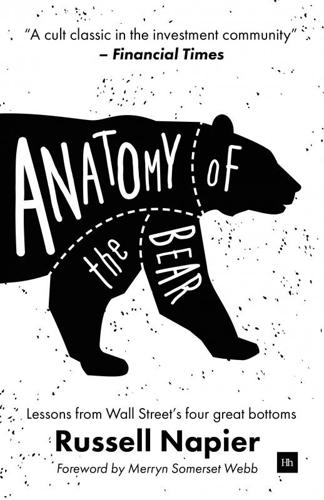
Anatomy of the Bear: Lessons From Wall Street's Four Great Bottoms
by
Russell Napier
Published 18 Jan 2016
No responsibility for loss occasioned to any person or corporate body acting or refraining to act as a result of reading material in this book can be accepted by the Publisher, by the Author, or by the employer of the Author. For Karen About the Author Professor Russell Napier is the author of the Solid Ground investment report and co-founder of the investment research portal ERIC (www.eri-c.com). Russell has worked in the investment business for 25 years and has been writing global macro strategy for institutional investors since 1995. Russell is founder and course director of the Practical History of Financial Markets at the Edinburgh Business School. Russell serves on the boards of two listed companies and is a member of the investment advisory committees of three fund management companies.
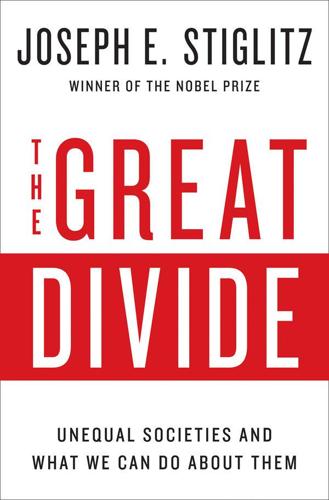
The Great Divide: Unequal Societies and What We Can Do About Them
by
Joseph E. Stiglitz
Published 15 Mar 2015
In particular, the essay “The Book of Jobs,” originally published in Vanity Fair, was based on research jointly done with Bruce Greenwald and other co-authors, supported by INET. See, e.g., D. Delli Gatti, M. Gallegati, B. C. Greenwald, A. Russo, and J. E. Stiglitz, “Sectoral Imbalances and Long Run Crises,” in F. Allen, M. Aoki, J.-P. Fitoussi, N. Kiyotaki, R. Gordon, and J. E. Stiglitz, eds., The Global Macro Economy and Finance, IEA Conference Volume No. 150-III (Houndmills, UK, and New York: Palgrave, 2012), pp. 61–97; and D. Delli Gatti, M. Gallegati, B. C. Greenwald, A. Russo, and J. E. Stiglitz, “Mobility Constraints, Productivity Trends, and Extended Crises,” Journal of Economic Behavior & Organization, 83(3): 375–393. 6.
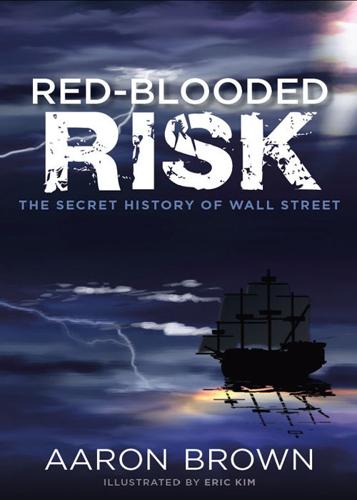
Red-Blooded Risk: The Secret History of Wall Street
by
Aaron Brown
and
Eric Kim
Published 10 Oct 2011
It’s far more important to hold investments with different time scales and investments with different kinds of risk. Rather than holding a few hundred stocks, an IGT investor might hold a few stocks of different types, some private equity, some venture capital, some real assets, some high frequency trading, some relative value strategies, some global macro strategies, some high grade bonds, and some distressed bonds. The process would continue until the advantage to adding new assets was less than the costs of research and transacting. Using this method typically results in portfolios with half a dozen to several dozen assets. There are tens of thousands of assets available, so there’s no reason for any two investors to hold the same or even similar portfolios.

The Trade Lifecycle: Behind the Scenes of the Trading Process (The Wiley Finance Series)
by
Robert P. Baker
Published 4 Oct 2015
The asset manager must keep careful account of how much has been invested, when and by whom. 169 Accounting Fees To pay their costs and make profit for their shareholders and partners, hedge funds and asset managers charge fees to investors. They can be any or all of the following. Management fees A global macro fund might charge 1.5% per annum management fees. This means any investor pays this fee regardless of the performance of the fund. Performance fees If the fund makes profit, the hedge fund or asset manager may take a share in the form of performance fees. This could be something like 10%. If the fund loses money there is obviously no fee payable.

How I Became a Quant: Insights From 25 of Wall Street's Elite
by
Richard R. Lindsey
and
Barry Schachter
Published 30 Jun 2007
Sterge published an article for the May/June 1989 issue of the Financial Analysts Journal entitled “On the Distribution of Financial Futures Price Changes.” Andrew Weisman is managing director, responsible for strategy, risk management, and portfolio analytics, at Merrill Lynch. Mr. Weisman was a founding member and director of research and risk management for Strativarius Capital Management LLC, a New York–based Global/Macro hedge fund. Until April 30, 2002, Mr. Weisman was the chief investment officer and member of the board of directors for Nikko Securities Co. International, Inc. Mr. Weisman has published an extensive collection of articles on asset allocation and risk issues related to hedge funds. Research awards include a Bernstein Fabozzi/Jacobs Levy Award for Outstanding Article published in The Journal of Portfolio Management in 2002, and the GAIM Research Paper of the Year in 2003.

The Contrarian: Peter Thiel and Silicon Valley's Pursuit of Power
by
Max Chafkin
Published 14 Sep 2021
But if these were failures, they were strategic failures, setting up Thiel’s actual moneymaking plans, which required him to start acting like the hedge-fund manager he hoped to become. The information age had arrived in the investment-fund world by this point, led by the Renaissance Technologies Medallion fund, which used computers to make thousands of trades a day, but Thiel styled himself as a throwback—a “global macro” investor, which meant predicting major economic and political shifts, for instance a recession in Brazil or a war in the Arabian Peninsula, and then betting based on those predictions. Macro investors might only try to make a trade a week—an approach that fit perfectly with Thiel’s unusual combination of indecisiveness and high tolerance for risk.

People, Power, and Profits: Progressive Capitalism for an Age of Discontent
by
Joseph E. Stiglitz
Published 22 Apr 2019
Also see the book by Erik Brynjolfsson and Andrew McAfee, Race against the Machine (Lexington: Digital Frontier Press, 2011). 6.For one version of this story, see “Difference Engine: Luddite Legacy,” The Economist, Nov. 4, 2011. 7.See Stiglitz, The Great Divide, 393–403, based on earlier research by Domenico Delli Gatti, Mauro Gallegati, Bruce Greenwald, Alberto Russo, and me, “Mobility Constraints, Productivity Trends, and Extended Crises,” Journal of Economic Behavior & Organization 83, no. 3 (2012): 375–93; and “Sectoral Imbalances and Long Run Crises,” in The Global Macro Economy and Finance, eds. Franklin Allen, Masahiko Aoki, Jean-Paul Fitoussi, Nobuhiro Kiyotaki, Roger Gordon, and Joseph E. Stiglitz, International Economic Association World Conference vol. 150-III (Houndmills, UK and New York: Palgrave, 2012), 61–97. 8.As an example of declining agricultural prices during this period, consider wheat, whose price declined some 60 percent in the early 1920s; the early 1930s saw another decrease of some 70 percent.
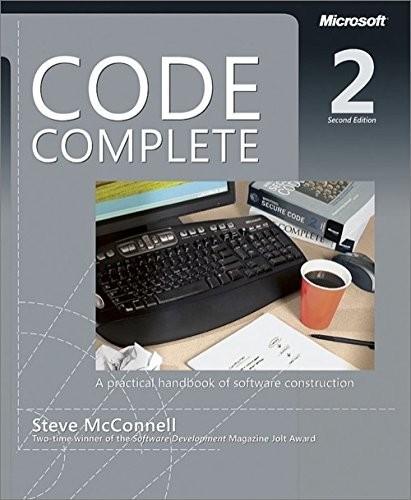
Code Complete (Developer Best Practices)
by
Steve McConnell
Published 8 Jun 2004
G_GLOBALCONSTANT Global named constants are in all uppercase and are prefixed with G_ and a mnemonic of the module (file) that defines the named constant in all uppercase—for example, G_SCREEN_ROWS_MAX. LOCALMACRO() Macro definitions that are private to a single routine or module (file) are in all uppercase. G_GLOBAL_MACRO() Global macro definitions are in all uppercase and are prefixed with G_ and a mnemonic of the module (file) that defines the macro in all uppercase—for example, G_SCREEN_LOCATION(). Table 11-5. Sample Naming Conventions for Visual Basic Entity Description C_ClassName Class names are in mixed uppercase and lowercase with an initial capital letter and a C_ prefix.
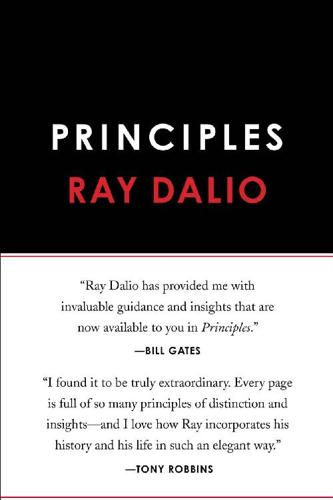
Principles: Life and Work
by
Ray Dalio
Published 18 Sep 2017
When we approach our philanthropy, we just see people and things that we are excited about helping. 12 A disengaged student is one who attends school but doesn’t engage in doing the work. A disconnected student is one who doesn’t attend school and the system has lost track of. 13 That January, we’d launched our first new product in more than a decade, a fund we called “Optimal Porfolio,” which combined alphas and betas in ways uniquely suited for a global macro environment in which interest rates were near zero. The launch was a big success, the largest in the history of the hedge fund industry. CHAPTER 7 MY LAST YEAR AND MY GREATEST CHALLENGE: 2016–2017 While even before that fortieth anniversary we had all been aware that our transition wasn’t going as smoothly as we’d hoped, in the months that followed our problems came to a head in ways that caught us off guard.

Advanced Stochastic Models, Risk Assessment, and Portfolio Optimization: The Ideal Risk, Uncertainty, and Performance Measures
by
Frank J. Fabozzi
Published 25 Feb 2008
According to HedgeFund.net, the total assets under management of hedge funds (excluding funds of hedge funds), as of the second half of 2007, are estimated to be about $2.7 trillion.173 Hedge funds vary by the types of investment strategies (styles) they employ. Some of the strategies with greatest proportion of assets under management allocated to them are long/short equity, arbitrage, global macro, and event driven. Consider a manager of an event-driven hedge fund. This type of hedge fund strategy is focused on investing in financial instruments of companies undergoing (expected to undergo) some event, for example, bankruptcy, merger, etc. Suppose that the goal of the manager is to identify companies that may become acquisition targets for other companies.
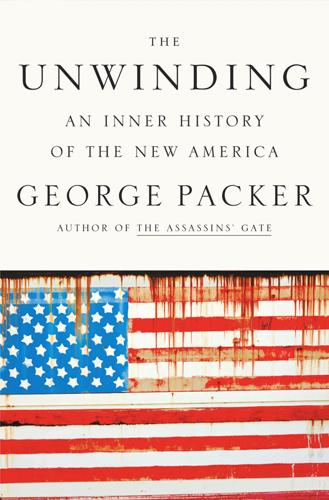
The Unwinding: An Inner History of the New America
by
George Packer
Published 4 Mar 2014
He became chairman of the board, and after Facebook got too big for its offices at 156 University Avenue in downtown Palo Alto, Palantir moved in—right across the street from where PayPal had its start. Eventually, Palantir would be valued at $2.5 billion. Thiel was on his way to becoming one of the world’s most successful technology investors. Clarium Capital was doing every bit as well. Thiel’s was a global macro fund—it depended on analysis of world markets and government actions at the highest level. In 2003, its first full year, with $250 million under management, it returned 65 percent on investments. Thiel’s strategy was to take the big-picture view of long-term trends and place bets that went against conventional wisdom: long on Japanese government bonds when others were selling; long on energy, because he was convinced that peak oil was real and global supplies were running out; long on U.S. treasuries, because he foresaw an anemic economy following the Bush recession of 2001.
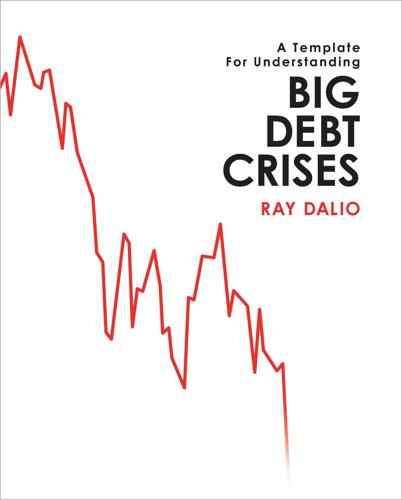
Big Debt Crises
by
Ray Dalio
Published 9 Sep 2018
As an investor, my perspective is different from that of most economists and policy makers because I bet on economic changes via the markets that reflect them, which forces me to focus on the relative values and flows that drive the movements of capital. Those, in turn, drive these cycles. In the process of trying to navigate them, I’ve found there is nothing like the pain of being wrong or the pleasure of being right as a global macro investor to provide the practical lessons about economics that are unavailable in textbooks. After repeatedly being bit by events I never encountered before, I was driven to go beyond my own personal experiences to examine all the big economic and market movements in history, and to do that in a way that would make them virtual experiences—i.e., so that they would show up to me as though I was experiencing them in real time.

EuroTragedy: A Drama in Nine Acts
by
Ashoka Mody
Published 7 May 2018
“Schäuble erteilt Eurohaushalt eine Abfuhr Brüsseler Ideen zur Vertiefung der Währungsunion ‘nicht realistisch’/EU-Finanzminister gegen Bad Bank” [Schäuble Rejects EU Budget: Ideas regarding the Further Integration of the Monetary Union “Not Realistic”/EU Finance Minister Opposes Bad Bank]. Frankfurter Allgemeine Zeitung, April 9. Nagle, Peter. 2017. “Global Macro Views: Euro Area Inflation Still a Headache for the ECB.” Institute for International Finance, Washington, D.C., September 7. Nash, Elizabeth. 1998. “Countdown to the Euro: View from Portugal.” Independent, December 29. Neumann, Jeannette, Patricia Kowsmann, and Giovanni Legorano. 2016. “European Banks Buffeted by Bond Investors’ Fears; Central Banks Are Wary of Suffering a Political and Financial Backlash if They Force Losses on a Bank’s Individual Investors.”
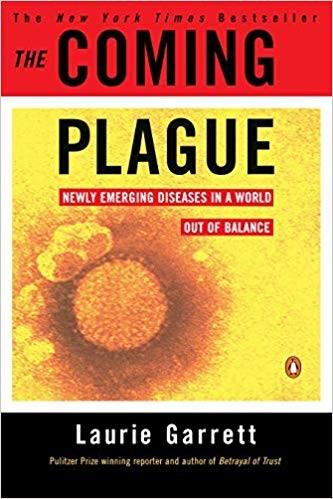
The Coming Plague: Newly Emerging Diseases in a World Out of Balance
by
Laurie Garrett
Published 31 Oct 1994
Over the last five years, scientists—particularly in the United States and France—have voiced concern that HIV, far from representing a public health aberration, may be a sign of things to come. They warn that humanity has learned little about preparedness and response to new microbes, despite the blatant tragedy of AIDS. And they call for recognition of the ways in which changes at the micro level of the environment of any nation can affect life at the global, macro level.6 Humanity’s ancient enemies are, after all, microbes. They didn’t go away just because science invented drugs, antibiotics, and vaccines (with the notable exception of smallpox). They didn’t disappear from the planet when Americans and Europeans cleaned up their towns and cities in the postindustrial era.
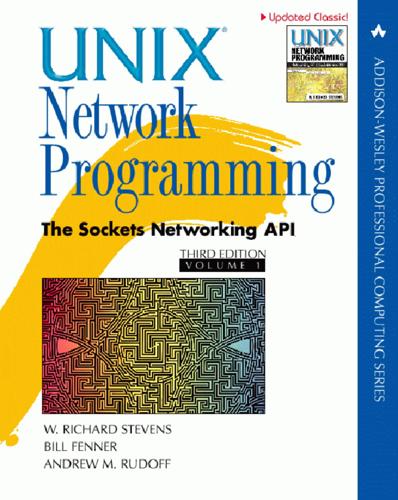
UNIX® Network Programming, Volume 1: The Sockets Networking API, 3rd Edition
by
W. Richard Stevens, Bill Fenner, Andrew M. Rudoff
Published 8 Jun 2013
R., xxiii hard error, 99 Harkins, D., 524, 949 Index Haug, J., xxiii HAVE_MSGHDR_MSG_CONTROL constant, 425 HAVE_SOCKADDR_SA_LEN constant, 68 hdr structure, 601, 603 – 604, 941 head of line blocking, 31, 293 – 299 head, STREAMS, 852 header extension length, 719, 725 length field, IPv4, 870 Hewlett-Packard, xxiii High-Performance Parallel Interface, see HIPPI high-priority, STREAMS message, 183, 854 Hinden, R., 55, 57, 216, 529, 721, 726, 871, 873, 877 – 879, 888, 948 – 949 HIPPI (High-Performance Parallel Interface), 55 historical advanced API, IPv6, 732 history, BSD networking, 20 – 21 Holbrook, H., 558, 950 Holdrege, M., 267, 952 home_page function, 455 – 456, 694, 697 hop count, routing, 481 hop limit, 43, 217 – 218, 552, 559, 563, 566, 617, 750, 755, 757, 761, 772, 872 – 873, 884 hop-by-hop options, IPv6, 719 – 725 host byte order, 77, 103, 110, 120, 148, 737, 740, 915 Host Requirements RFC, 948 HOST_NOT_FOUND constant, 308 host_serv function, 325 – 326, 457, 713, 717, 728, 745, 757, 798 definition of, 325 source code, 326 hostent structure, 307 – 308, 310, 345, 347 – 348, 929 definition of, 307 hostent_data structure, 346 HP-UX, xxiii, 22, 78, 108, 257, 262, 306, 343, 346, 390, 538, 793 hstrerror function, 308, 310 HTML (Hypertext Markup Language), 454, 825 htonl function, 79, 103, 152, 918 definition of, 79 htons function, 8, 311 definition of, 79 HTTP (Hypertext Transfer Protocol), 9, 40, 62, 103, 106, 211, 452, 456, 459, 595, 696, 820, 825, 896 Huitema, C., 304, 889, 950, 954 Hypertext Markup Language, see HTML Hypertext Transfer Protocol, see HTTP I_RECVFD constant, 420 I_SENDFD constant, 420 IANA (Internet Assigned Numbers Authority), 50 – 52, 215, 311, 950, 953 IBM, xxiii ICMP (Internet Control Message Protocol), 33, 62, 200, 249, 256 – 257, 735, 739, 742, 755, 896, 922, UNIX Network Programming 925 address request, 739, 883 code field, 882 destination unreachable, 100 – 101, 144, 200, 249, 762, 764 – 765, 771, 775, 865, 883 – 884 destination unreachable, fragmentation required, 56, 771, 883 echo reply, 735, 741, 883 – 884 echo request, 735, 739, 741, 883 – 884 header, picture of, 882 message daemon, implementation, 769 – 786 packet too big, 56, 771, 884 parameter problem, 720, 883 – 884 port unreachable, 249, 253, 257, 265, 534, 755, 761, 764, 771, 794, 815, 883 – 884, 925 redirect, 485, 497, 883 – 884 router advertisement, 735, 741, 883 – 884 router solicitation, 735, 883 – 884 source quench, 771 – 772, 883 time exceeded, 755, 761, 764, 771, 883 – 884 timestamp request, 739, 883 type field, 882 ICMP6_FILTER socket option, 216, 740 ICMP6_FILTER_SETBLOCK macro, definition of, 740 ICMP6_FILTER_SETBLOCKALL macro, definition of, 740 ICMP6_FILTER_SETPASS macro, definition of, 740 ICMP6_FILTER_SETPASSALL macro, definition of, 740 ICMP6_FILTER_WILLBLOCK macro, definition of, 740 ICMP6_FILTER_WILLPASS macro, definition of, 740 icmp6_filter structure, 193, 216, 740 icmpcode_v4 function, 765 icmpcode_v6 function, 765 icmpd program, 769, 772, 774 – 786, 946 icmpd_dest member, 772 icmpd_err member, 771, 774, 783 – 784 icmpd_errno member, 771 icmpd.h header, 775 ICMPv4 (Internet Control Message Protocol version 4), 33 – 34, 735, 740, 769, 871, 882 – 884 checksum, 737, 753, 806, 882 header, 743, 755 message types, 883 ICMPv6 (Internet Control Message Protocol version 6), 33 – 34, 216, 735, 738, 769, 882 – 884 checksum, 738, 753 – 754, 882 header, 744, 755 message types, 884 multicast listener done, 884 multicast listener query, 884 multicast listener report, 884 Index 965 neighbor advertisement, 884 neighbor advertisement, inverse, 884 neighbor solicitation, 884 neighbor solicitation, inverse, 884 socket option, 216 type filtering, 740 – 741 id program, 431 ident member, 405 identification field, IPv4, 870 IEC (International Electrotechnical Commission), 26, 950 IEEE (Institute of Electrical and Electronics Engineers), 26, 509, 550, 879, 950 IEEE-IX, 26 IETF (Internet Engineering Task Force), 28, 947 if_announcemsghdr structure, 487 definition of, 488 if_freenameindex function, 504 – 508 definition of, 504 source code, 508 if_index member, 504, 903 if_indextoname function, 504 – 508, 566, 568, 593 definition of, 504 source code, 506 if_msghdr structure, 487, 502 definition of, 488 if_name member, 504, 508, 903 if_nameindex function, 486, 504 – 508 definition of, 504 source code, 507 if_nameindex structure, 504, 507 – 508, 903 definition of, 504 if_nametoindex function, 486, 504 – 508, 566 – 567, 569 definition of, 504 source code, 505 ifa_msghdr structure, 487 definition of, 488 ifam_addrs member, 489, 493 ifc_buf member, 469 – 470 ifc_len member, 77, 468, 470 ifc_req member, 469 ifconf structure, 77, 467 – 468, 470 definition of, 469 ifconfig program, 23, 25, 103, 234, 471, 480 IFF_BROADCAST constant, 480 IFF_POINTOPOINT constant, 480 IFF_PROMISC constant, 792 IFF_UP constant, 480 ifi_hlen member, 473, 478, 502 ifi_index member, 502 ifi_info structure, 469, 471, 473, 475, 478, 484, 500, 502, 608 ifi_next member, 471, 478 ifm_addrs member, 489, 493 966 UNIX Network Programming ifm_type member, 502 ifma_msghdr structure, 487 definition of, 488 ifmam_addrs member, 489 IFNAMSIZ constant, 504 ifr_addr member, 469, 480 – 481 ifr_broadaddr member, 469, 481, 484 ifr_data member, 469 ifr_dstaddr member, 469, 481, 484 ifr_flags member, 469, 480 – 481 ifr_metric member, 469, 481 ifr_name member, 470, 480 ifreq structure, 467 – 468, 470, 475, 477, 480, 484, 568 definition of, 469 IFT_NONE constant, 591 IGMP (Internet Group Management Protocol), 33 – 34, 556, 735, 739 – 740, 871 checksum, 753 ILP32, programming model, 28 imperfect multicast filtering, 555 implementation ICMP message daemon, 769 – 786 ping program, 741 – 754 traceroute program, 755 – 768 imr_interface member, 560, 562, 568 imr_multiaddr member, 560, 562 imr_sourceaddr member, 562 IN6_IS_ADDR_LINKLOCAL macro, definition of, 360 IN6_IS_ADDR_LOOPBACK macro, definition of, 360 IN6_IS_ADDR_MC_GLOBAL macro, definition of, 360 IN6_IS_ADDR_MC_LINKLOCAL macro, definition of, 360 IN6_IS_ADDR_MC_NODELOCAL macro, definition of, 360 IN6_IS_ADDR_MC_ORGLOCAL macro, definition of, 360 IN6_IS_ADDR_MC_SITELOCAL macro, definition of, 360 IN6_IS_ADDR_MULTICAST macro, definition of, 360 IN6_IS_ADDR_SITELOCAL macro, definition of, 360 IN6_IS_ADDR_UNSPECIFIED macro, definition of, 360 IN6_IS_ADDR_V4COMPAT macro, definition of, 360 IN6_IS_ADDR_V4MAPPED macro, 355, 360, 362, 745 definition of, 360 in6_addr structure, 193, 561 definition of, 71 in6_pktinfo structure, 588, 615 – 617, 731 Index definition of, 616 IN6ADDR_ANY_INIT constant, 103, 320, 322, 412, 616, 881 IN6ADDR_LOOPBACK_INIT constant, 880 in6addr_any constant, 103, 881 in6addr_loopback constant, 880 in_addr structure, 70, 193, 308, 310, 358, 560, 563 definition of, 68 in_addr_t datatype, 69 – 70 in_cksum function, 753 source code, 753 in_pcbdetach function, 140 in_port_t datatype, 69 INADDR_ANY constant, 13, 53, 102 – 103, 122, 126, 214, 242, 288, 320, 322, 412, 534, 560 – 563, 859, 876, 915 INADDR_LOOPBACK constant, 876 INADDR_MAX_LOCAL_GROUP constant, 915 INADDR_NONE constant, 82, 901, 915 in-addr.arpa domain, 304, 310 in-band data, 645 incarnation, definition of, 44 incomplete connection queue, 104 index, interface, 217, 489, 498, 502, 504 – 508, 560 – 563, 566, 569, 577, 616, 731 INET6_ADDRSTRLEN constant, 83, 86, 901 inet6_opt_append function, 723 – 724 definition of, 723 inet6_opt_find function, 725 definition of, 724 inet6_opt_finish function, 723 – 724 definition of, 723 inet6_opt_get_val function, 725 definition of, 724 inet6_opt_init function, 723 – 724 definition of, 723 inet6_option_alloc function, 732 inet6_option_append function, 732 inet6_option_find function, 732 inet6_option_init function, 732 inet6_option_next function, 732 inet6_option_space function, 732 inet6_opt_next function, 724 – 725 definition of, 724 inet6_opt_set_val function, 723 – 725 definition of, 723 inet6_rth_add function, 727 – 728 definition of, 727 inet6_rthdr_add function, 732 inet6_rthdr_getaddr function, 732 inet6_rthdr_getflags function, 732 inet6_rthdr_init function, 732 inet6_rthdr_lasthop function, 732 inet6_rthdr_reverse function, 732 inet6_rthdr_segments function, 732 inet6_rthdr_space function, 732 UNIX Network Programming inet6_rth_getaddr function, 728, 731 definition of, 728 inet6_rth_init function, 727 – 728 definition of, 727 inet6_rth_reverse function, 728, 730 definition of, 728 inet6_rth_segments function, 728, 731 definition of, 728 inet6_rth_space function, 727 – 728 definition of, 727 inet6_srcrt_print function, 730 – 731 INET_ADDRSTRLEN constant, 83, 86, 901 inet_addr function, 9, 67, 82 – 83, 93 definition of, 82 inet_aton function, 82 – 83, 93, 314 definition of, 82 inet_ntoa function, 67, 82 – 83, 343, 685 definition of, 82 inet_ntop function, 67, 82 – 86, 93, 110, 309, 341, 343, 345, 350, 593, 731 definition of, 83 IPv4-only version, source code, 85 inet_pton function, 8 – 9, 11, 67, 82 – 85, 93, 290, 333, 343, 930 definition of, 83 IPv4-only version, source code, 85 inet_pton_loose function, 93 inet_srcrt_add function, 713, 715 inet_srcrt_init function, 712, 715 inet_srcrt_print function, 714 inetd program, 61, 114, 118 – 119, 154, 363, 371 – 380, 587, 613 – 614, 825, 850, 897, 934, 945 Information Retrieval Service, see IRS INFTIM constant, 184, 902 init program, 132, 145, 938 init_v6 function, 749 initial thread, 676 in.rdisc program, 735 Institute of Electrical and Electronics Engineers, see IEEE int16_t datatype, 69 int32_t datatype, 69 int8_t datatype, 69 interface address, UDP, binding, 608 – 612 configuration, ioctl function, 468 – 469 index, 217, 489, 498, 502, 504 – 508, 560 – 563, 566, 569, 577, 616, 731 index, recvmsg function, receiving, 588 – 593 logical, 877 loopback, 23, 792, 799, 809, 876 – 877 message-based, 858 operations, ioctl function, 480 – 481 UDP determining outgoing, 261 – 262 interface-local multicast scope, 552 – 553 International Electrotechnical Commission, see IEC Index 967 International Organization for Standardization, see ISO Internet, 5, 22 Internet Assigned Numbers Authority, see IANA Internet Control Message Protocol, see ICMP Internet Control Message Protocol version 4, see ICMPv4 Internet Control Message Protocol version 6, see ICMPv6 Internet Draft, 947 Internet Engineering Task Force, see IETF Internet Group Management Protocol, see IGMP Internet Protocol, see IP Internet Protocol next generation, see IPng Internet Protocol version 4, see IPv4 Internet Protocol version 6, see IPv6 Internet service provider, see ISP Internetwork Packet Exchange, see IPX interoperability IPv4 and IPv6, 353 – 362 IPv4 client IPv6 server, 354 – 357 IPv6 client IPv4 server, 357 – 359 source code portability, 361 interprocess communication, see IPC interrupts, software, 129 inverse, ICMPv6 neighbor advertisement, 884 ICMPv6 neighbor solicitation, 884 I/O asynchronous, 160, 468, 663 definition of, Unix, 399 model, asynchronous, 158 – 159 model, blocking, 154 – 155 model, comparison of, 159 – 160 model, I/O, multiplexing, 156 – 157 model, nonblocking, 155 – 156 model, signal-driven, 157 – 158 models, 154 – 160 multiplexing, 153 – 189 multiplexing I/O, model, 156 – 157 nonblocking, 88, 165, 234 – 235, 388, 398, 435 – 464, 468, 665, 669, 671, 919, 945 signal-driven, 200, 234 – 235, 663 – 673 standard, 168, 344, 399 – 402, 409, 437, 935, 952 synchronous, 160 ioctl function, 191, 222, 233 – 234, 399, 403 – 404, 409, 420, 465 – 469, 474 – 475, 477 – 478, 480 – 485, 500, 538, 566, 568, 585, 647, 654, 664, 666, 669, 790, 792, 799, 852, 857, 868 ARP cache operations, 481 – 483 definition of, 466, 857 file operations, 468 interface configuration, 468 – 469 interface operations, 480 – 481 routing table operations, 483 – 484 socket operations, 466 – 467 STREAMS, 857 – 858 968 UNIX Network Programming IOV_MAX constant, 390 iov_base member, 389 iov_len member, 389, 392 iovec structure, 389 – 391, 393, 601 definition of, 389 IP (Internet Protocol), 33 fragmentation and broadcast, 537 – 538 fragmentation and multicast, 571 Multicast Infrastructure, 571, 584 – 585 Multicast Infrastructure session announcements, 571 – 575 routing, 869 spoofing, 108, 948 version number field, 869, 871 ip6_mtuinfo structure, definition of, 619 ip6.arpa domain, 304 ip6m_addr member, 619 ip6m_mtu member, 619 IP_ADD_MEMBERSHIP socket option, 193, 560, 562 IP_ADD_SOURCE_MEMBERSHIP socket option, 193, 560 IP_BLOCK_SOURCE socket option, 193, 560, 562 IP_DROP_MEMBERSHIP socket option, 193, 560 – 561 IP_DROP_SOURCE_MEMBERSHIP socket option, 193, 560 IP_HDRINCL socket option, 193, 214, 710, 736 – 738, 753, 755, 790, 793, 805 – 806 IP_MULTICAST_IF socket option, 193, 559, 563, 945 IP_MULTICAST_LOOP socket option, 193, 559, 563 IP_MULTICAST_TTL socket option, 193, 215, 559, 563, 871, 945 IP_OPTIONS socket option, 193, 214, 709 – 710, 718, 733, 945 IP_RECVDSTADDR socket option, 193, 211, 214, 251, 265, 392 – 396, 587 – 588, 590, 592, 608, 616, 620, 666, 895 ancillary data, picture of, 394 IP_RECVIF socket option, 193, 215, 395, 487, 588, 590, 592, 608, 620, 666 ancillary data, picture of, 591 IP_TOS socket option, 193, 215, 870, 895 IP_TTL socket option, 193, 215, 218, 755, 761, 871, 895 IP_UNBLOCK_SOURCE socket option, 193, 560 ip_id member, 740, 806 ip_len member, 737, 740, 806 ip_mreq structure, 193, 560, 568 definition of, 560 ip_mreq_source structure, 193 definition of, 562 ip_off member, 737, 740 IPC (interprocess communication), 411 – 412, Index 545 – 547, 675 ipi6_addr member, 616 ipi6_ifindex member, 616 ipi_addr member, 588, 901 ipi_ifindex member, 588, 901 IPng (Internet Protocol next generation), 871 ipopt_dst member, 714 ipopt_list member, 714 ipoption structure, definition of, 714 IPPROTO_ICMP constant, 736 IPPROTO_ICMPV6 constant, 193, 216, 738, 740 IPPROTO_IP constant, 214, 394 – 395, 591, 710 IPPROTO_IPV6 constant, 216, 395, 615 – 619, 722, 727 IPPROTO_RAW constant, 737 IPPROTO_SCTP constant, 97, 222, 288 IPPROTO_TCP constant, 97, 219, 288, 519 IPPROTO_UDP constant, 97 IPsec, 951 IPv4 (Internet Protocol version 4), 33, 869 address, 874 – 877 and IPv6 interoperability, 353 – 362 checksum, 214, 737, 753, 871 client IPv6 server, interoperability, 354 – 357 destination address, 871 fragment offset field, 871 header, 743, 755, 869 – 871 header length field, 870 header, picture of, 870 identification field, 870 multicast address, 549 – 551 multicast address, ethernet mapping, picture of, 550 options, 214, 709 – 711, 871 protocol field, 871 receiving packet information, 588 – 593 server, interoperability, IPv6 client, 357 – 359 socket address structure, 68 – 70 socket option, 214 – 215 source address, 871 source routing, 711 – 719 total length field, 870 IPv4-compatible IPv6 address, 880 IPv4/IPv6 host, definition of, 34 IPv4-mapped IPv6 address, 93, 322, 333, 354 – 360, 745, 879 – 880 IPv6 (Internet Protocol version 6), xx, 33, 871 address, 877 – 881 backbone, see 6bone checksum, 216, 738, 873 client IPv4 server, interoperability, 357 – 359 destination address, 873 destination options, 719 – 725 extension headers, 719 flow label field, 871 getaddrinfo function, 322 – 323 UNIX Network Programming header, 744, 755, 871 – 874 header, picture of, 872 historical advanced API, 732 hop-by-hop options, 719 – 725 interoperability, IPv4 and, 353 – 362 multicast address, 551 – 552 multicast address, ethernet mapping, picture of, 550 multicast address, picture of, 551 next header field, 872 options, see IPv6, extension headers path MTU control, 618 – 619 payload length field, 872 receiving packet information, 615 – 618 routing header, 725 – 731 server, interoperability, IPv4 client, 354 – 357 socket address structure, 71 – 72 socket option, 216 – 218 source address, 873 source routing, 725 – 731 source routing segments left, 725 source routing type, 725 sticky options, 731 – 732 IPV6_ADD_MEMBERSHIP socket option, 560 – 561 IPV6_ADDRFORM socket option, 361 IPV6_CHECKSUM socket option, 193, 216, 738 IPV6_DONTFRAG socket option, 216, 619 IPV6_DROP_MEMBERSHIP socket option, 560 – 561 IPV6_DSTOPTS socket option, 193, 395, 732 ancillary data, picture of, 722 IPV6_HOPLIMIT socket option, 193, 395, 617, 732, 749 – 750, 873 ancillary data, picture of, 615 IPV6_HOPOPTS socket option, 193, 395, 732 ancillary data, picture of, 722 IPV6_JOIN_GROUP socket option, 193, 560, 562 IPV6_LEAVE_GROUP socket option, 193, 561 IPV6_MULTICAST_HOPS socket option, 193, 559, 563, 617, 873 IPV6_MULTICAST_IF socket option, 193, 559, 563, 616 IPV6_MULTICAST_LOOP socket option, 193, 559, 563 IPV6_NEXTHOP socket option, 193, 217, 395, 617, 732 ancillary data, picture of, 615 IPV6_PATHMTU socket option, 217, 619 IPV6_PKTINFO socket option, 193, 251, 395, 561, 608, 616, 620, 666, 732 ancillary data, picture of, 615 IPV6_PKTOPTIONS socket option, 732 IPV6_RECVDSTOPTS socket option, 217, 722 IPV6_RECVHOPLIMIT socket option, 217 – 218, 617, 749, 873 IPV6_RECVHOPOPTS socket option, 217, 722 Index 969 IPV6_RECVPATHMTU socket option, 216 – 217, 619 IPV6_RECVPKTINFO socket option, 217, 616 – 617, 620 IPV6_RECVRTHDR socket option, 218, 727, 729 IPV6_RECVTCLASS socket option, 218, 618 IPV6_RTHDR socket option, 193, 395, 732 ancillary data, picture of, 727 IPV6_RTHDR_TYPE_0 constant, 727 IPV6_TCLASS socket option, 395, 618, 732, 871 ancillary data, picture of, 615 IPV6_UNICAST_HOPS socket option, 193, 218, 617, 755, 761, 873 IPV6_USE_MIN_MTU socket option, 218, 618 – 619 IPV6_V6ONLY socket option, 218, 357 IPV6_XXX socket options, 218 ipv6_mreq structure, 193, 560, 569 definition of, 560 ipv6mr_interface member, 560, 569 ipv6mr_multiaddr member, 560 IPX (Internetwork Packet Exchange), 952 IRS (Information Retrieval Service), 306 ISO (International Organization for Standardization), 18, 26, 950 ISO 8859, 573 ISP (Internet service provider), 875 iterative server, 15, 114, 243, 821 – 822 Jackson, A., 721, 952 Jacobson, V., 35, 38 – 39, 44, 571, 596, 598 – 599, 737, 788, 790, 896, 949 – 951 Jim, J., 285, 953 Jinmei, T., 28, 216, 397, 719, 738, 744, 953 joinable thread, 678 Jones, R.